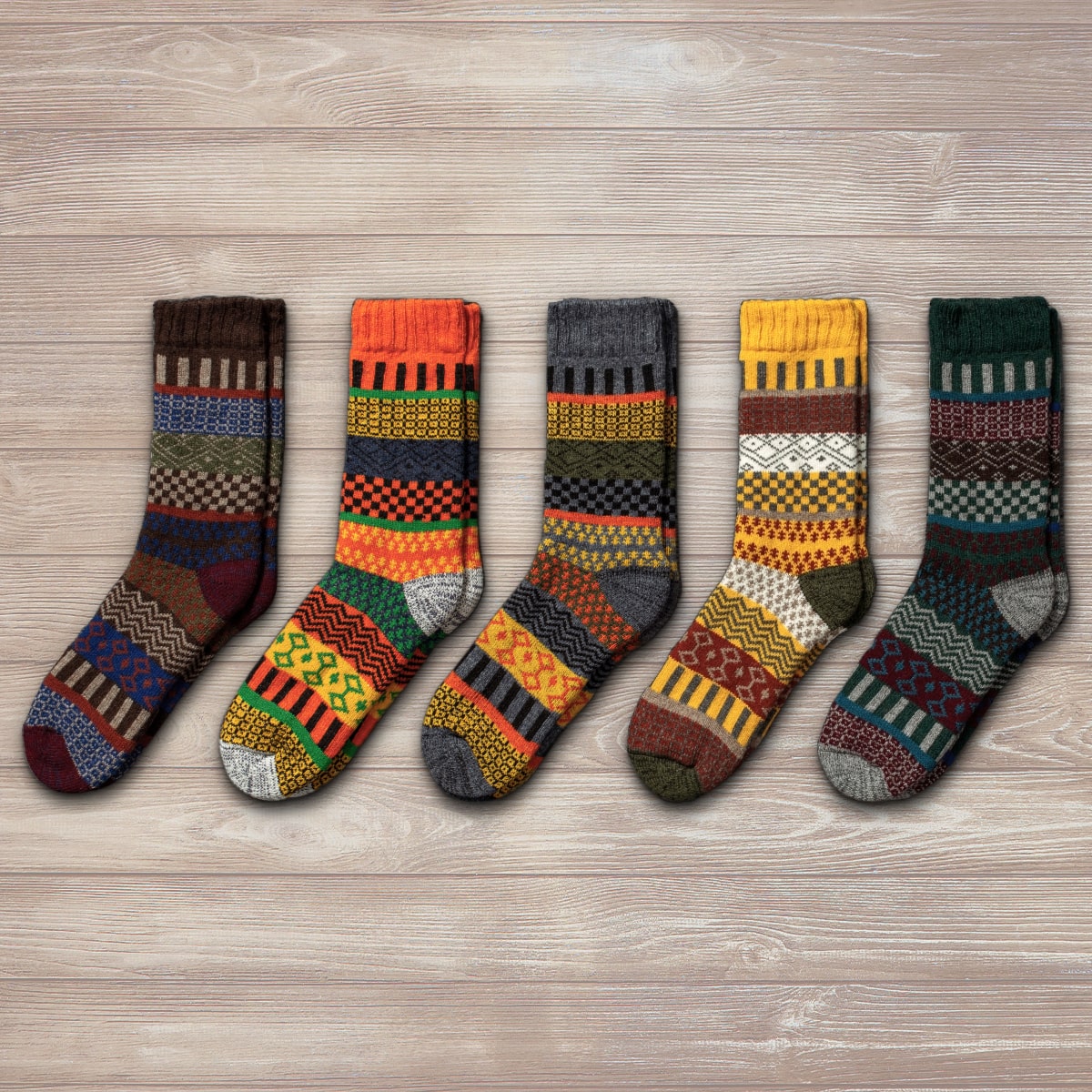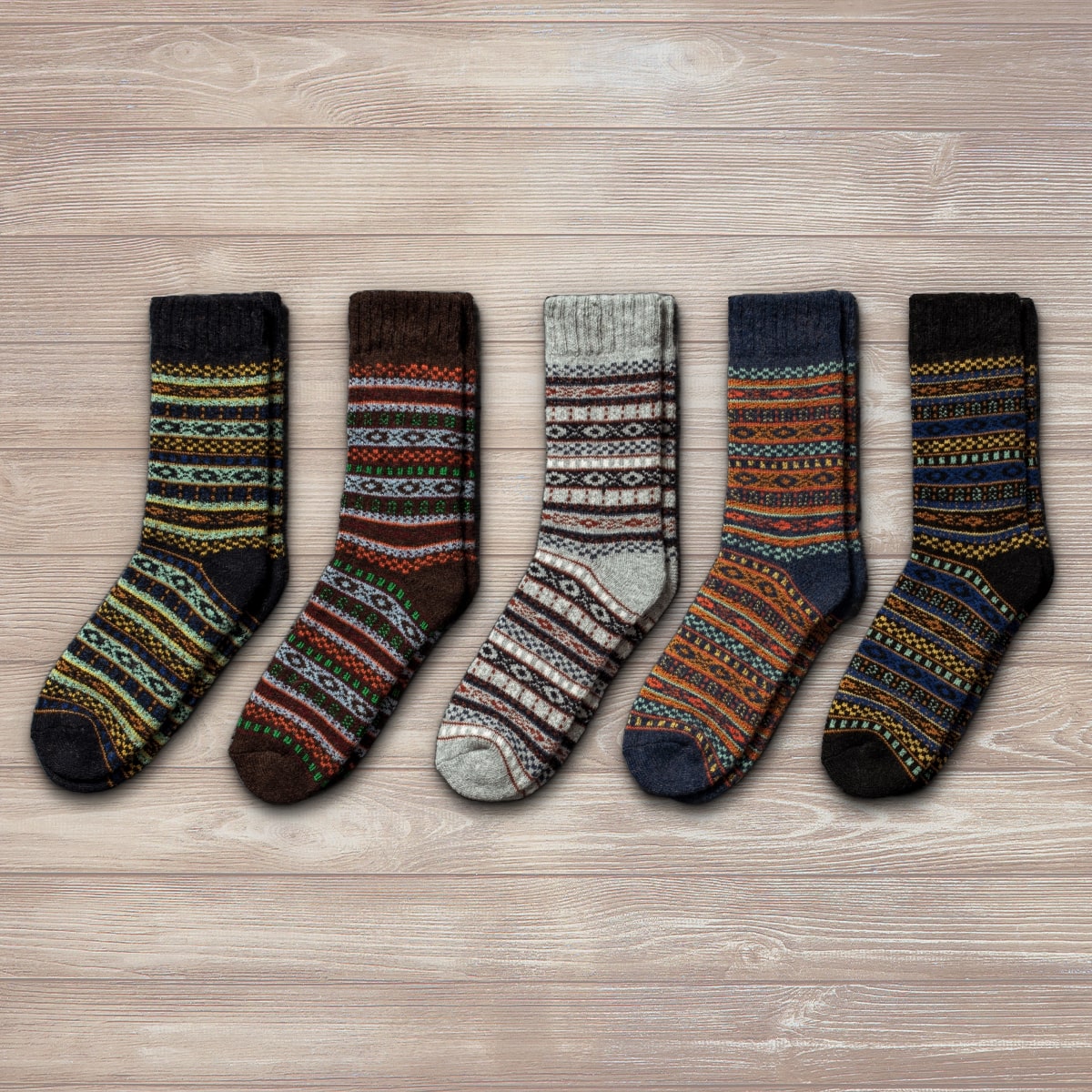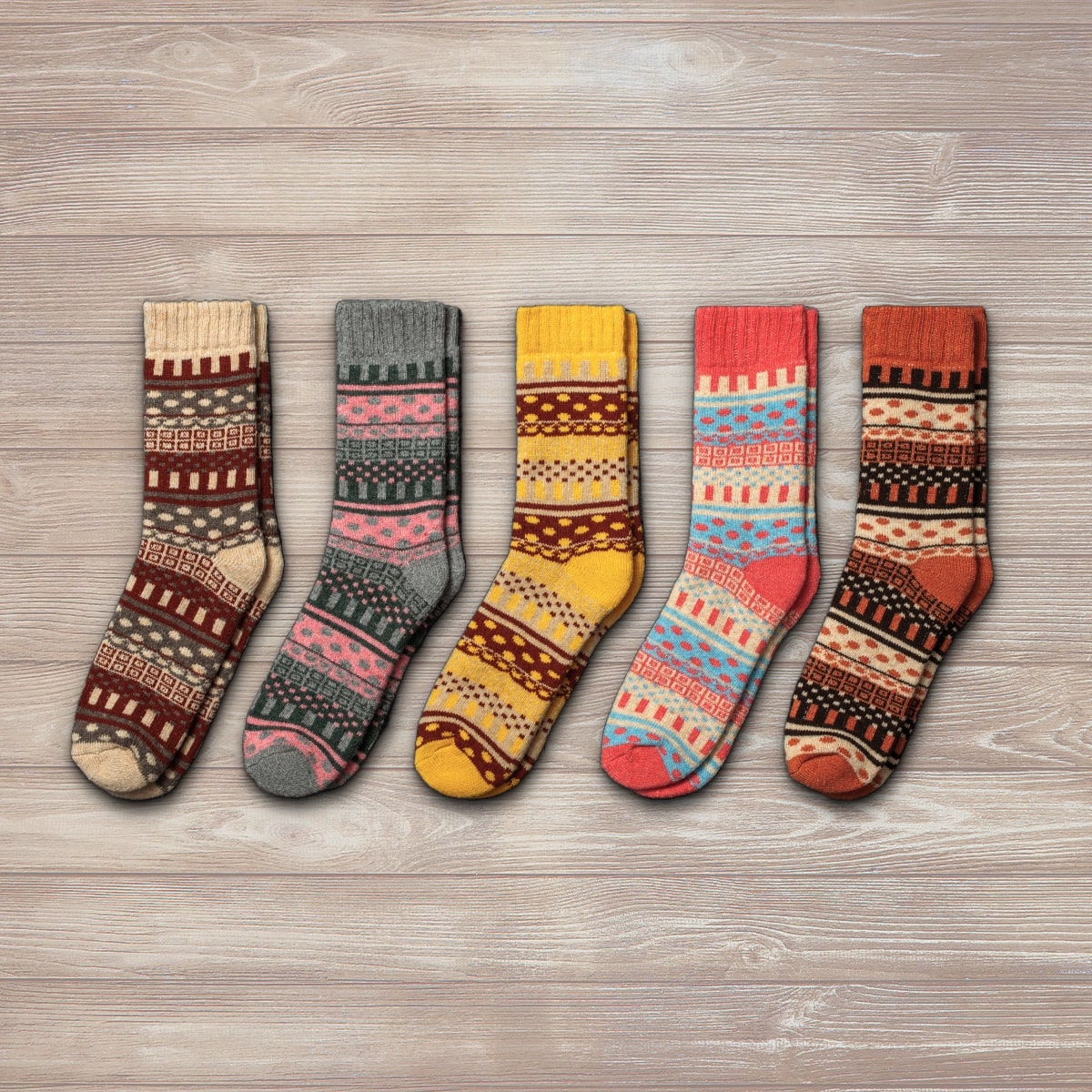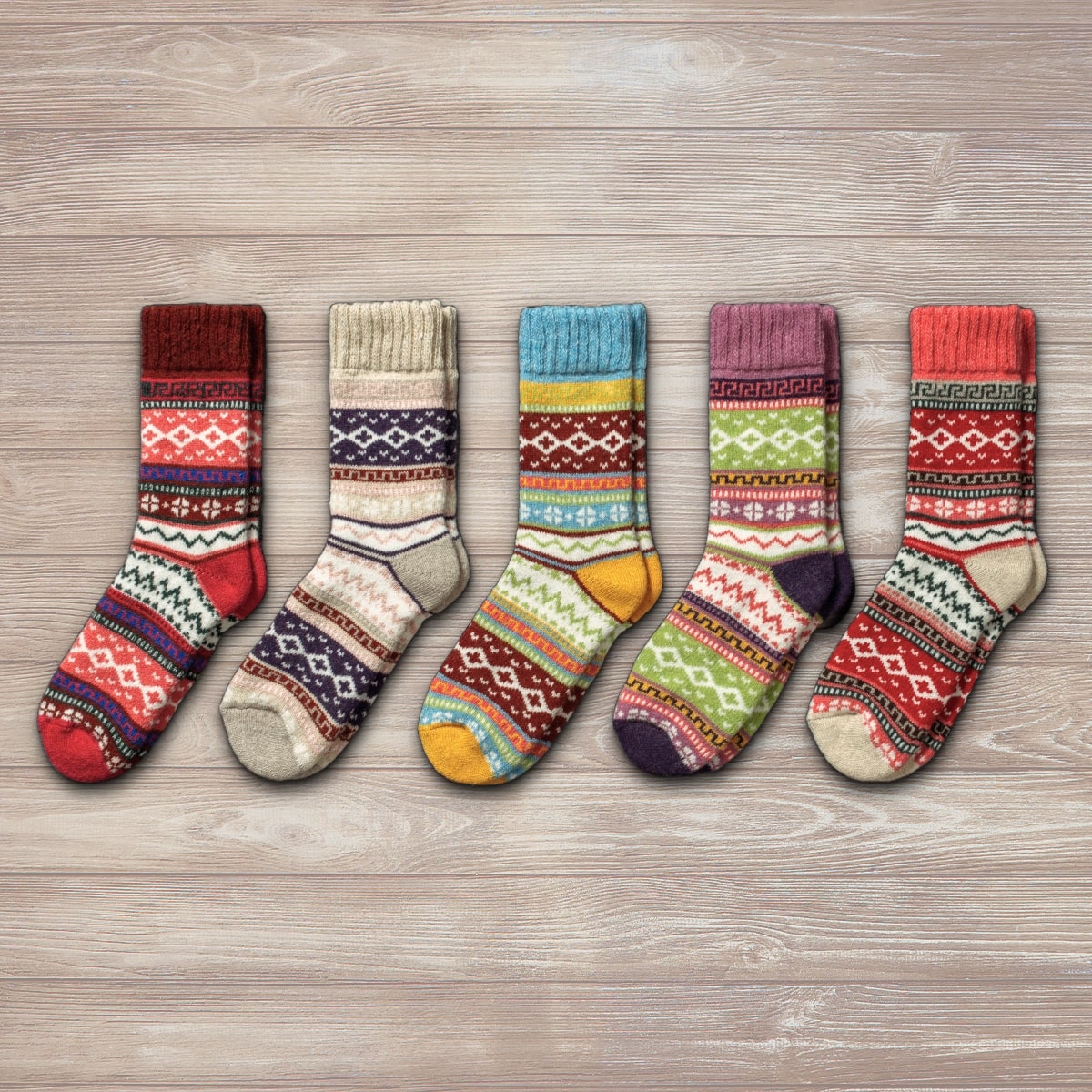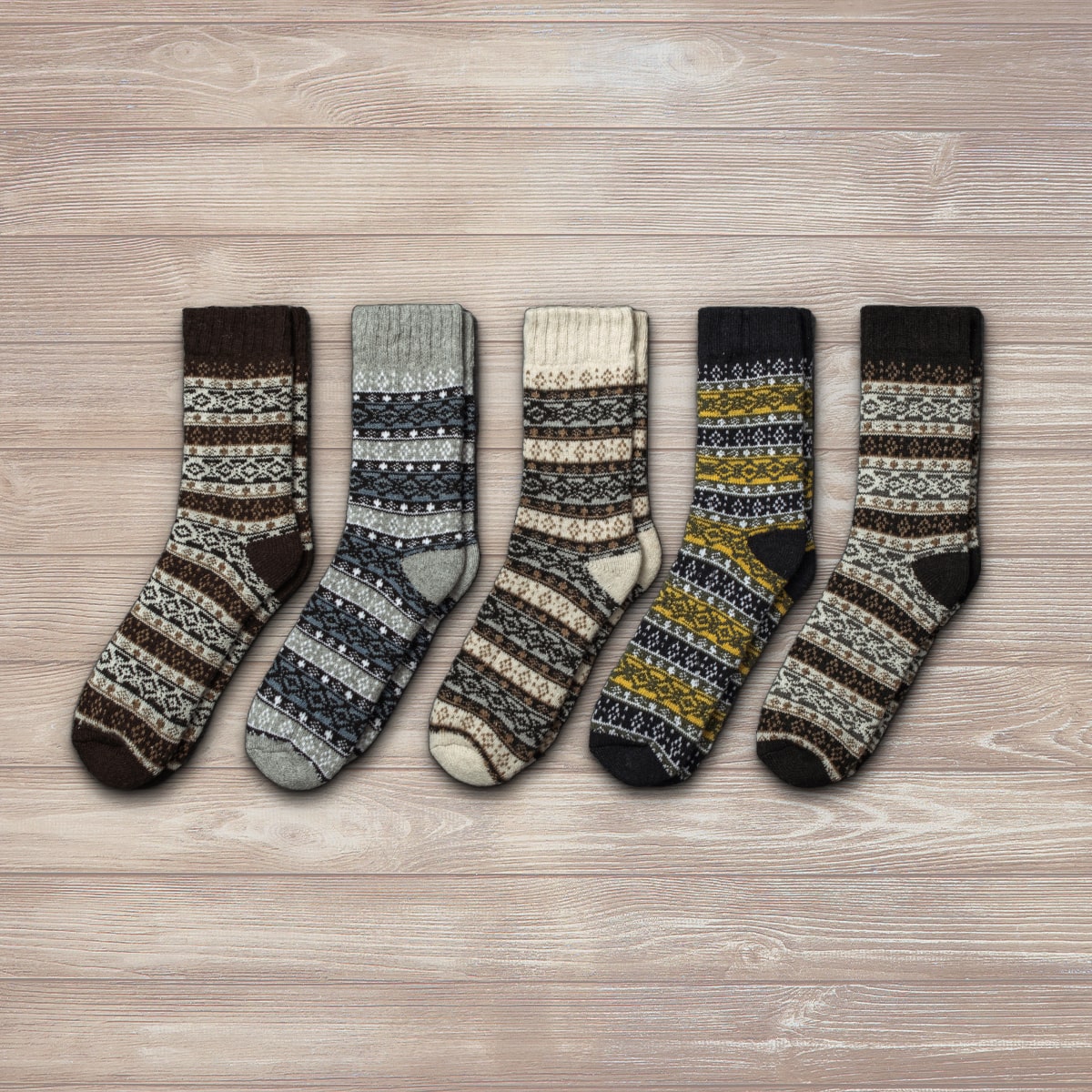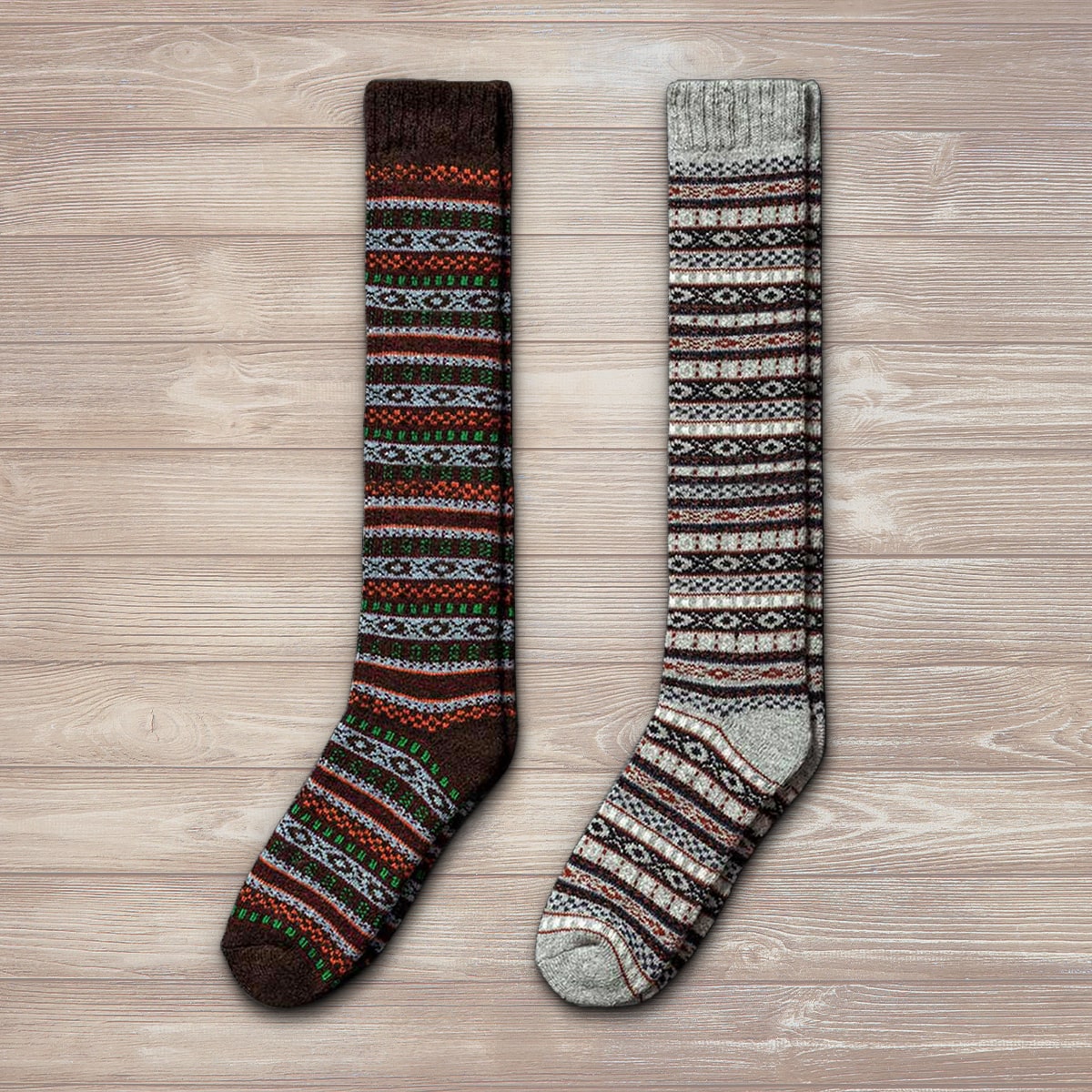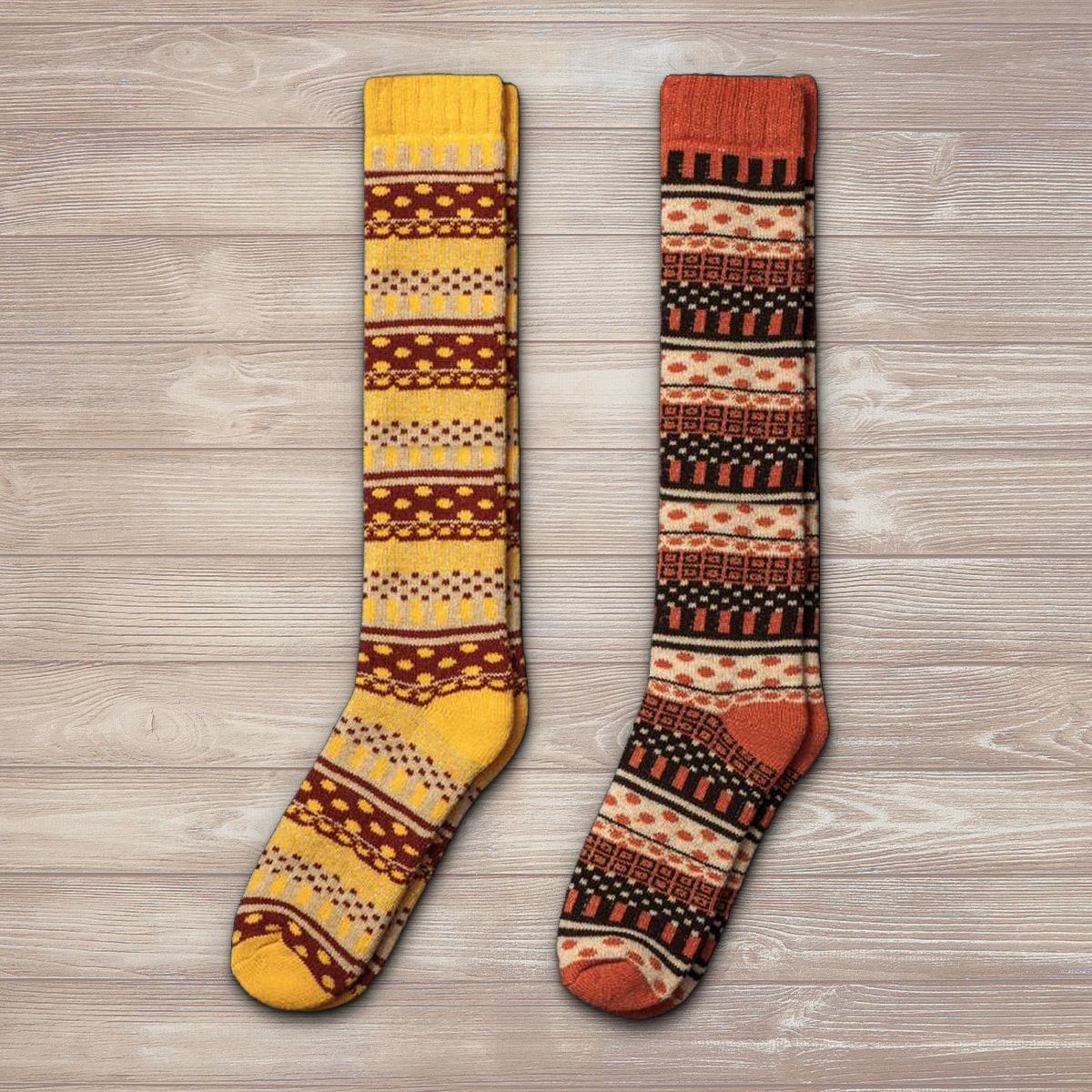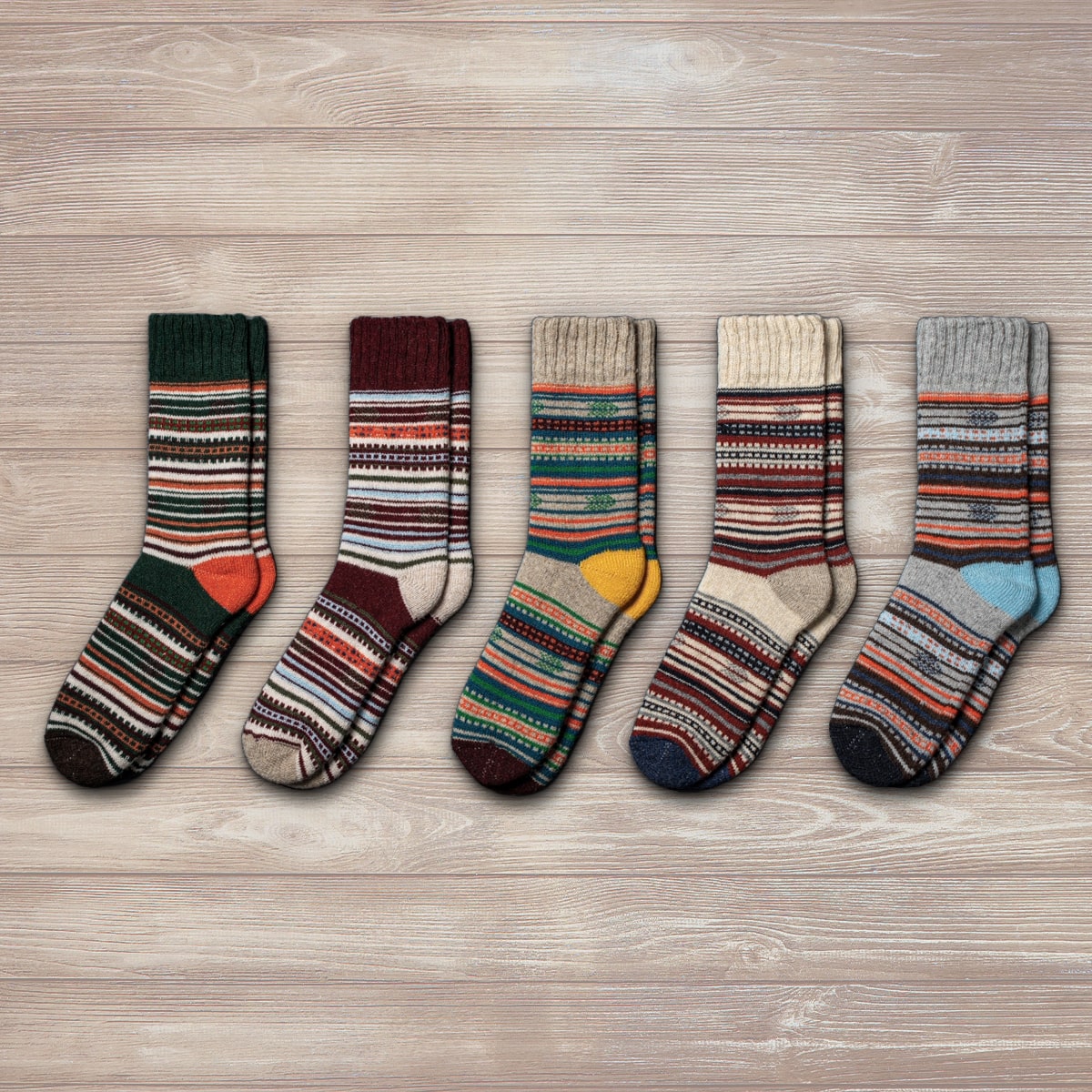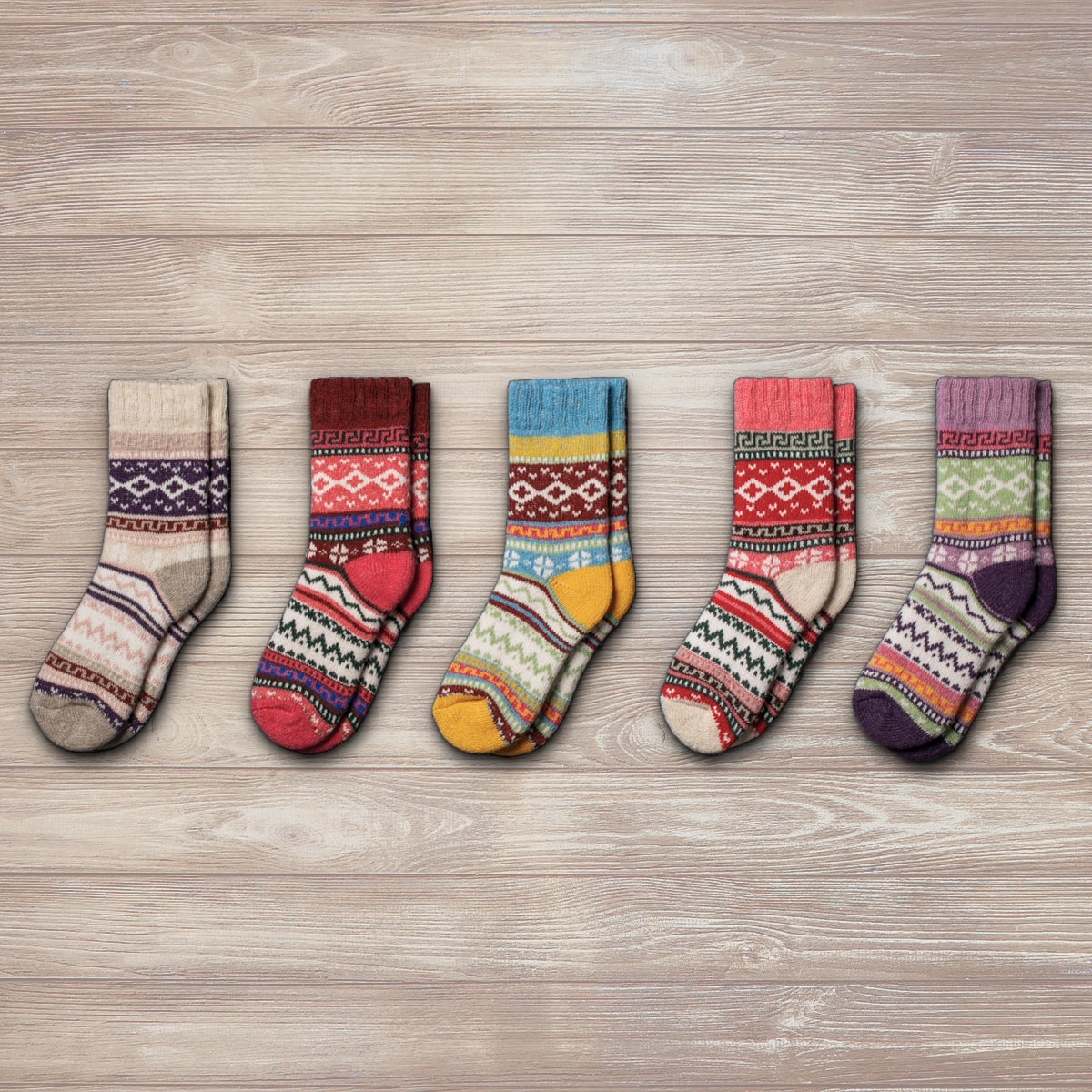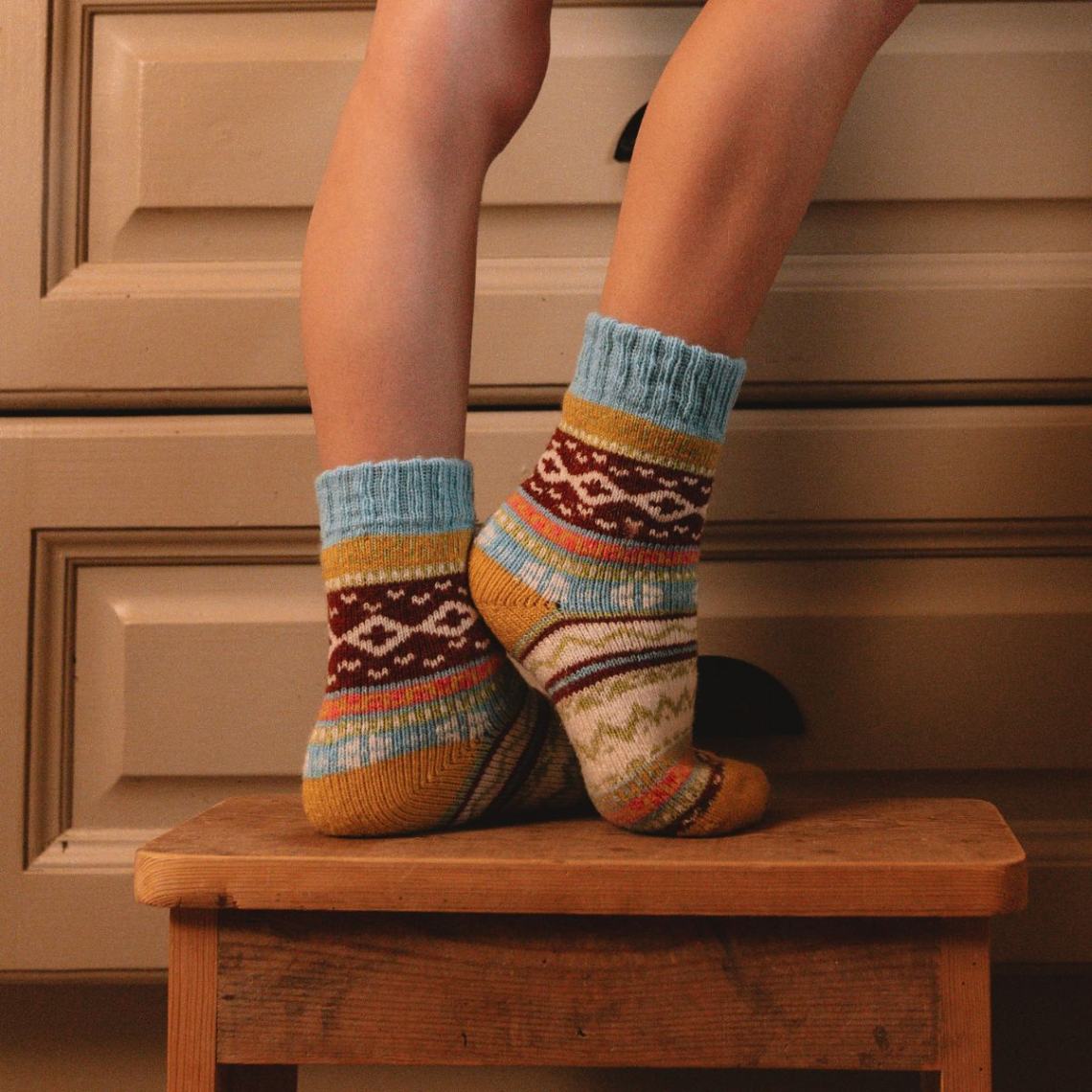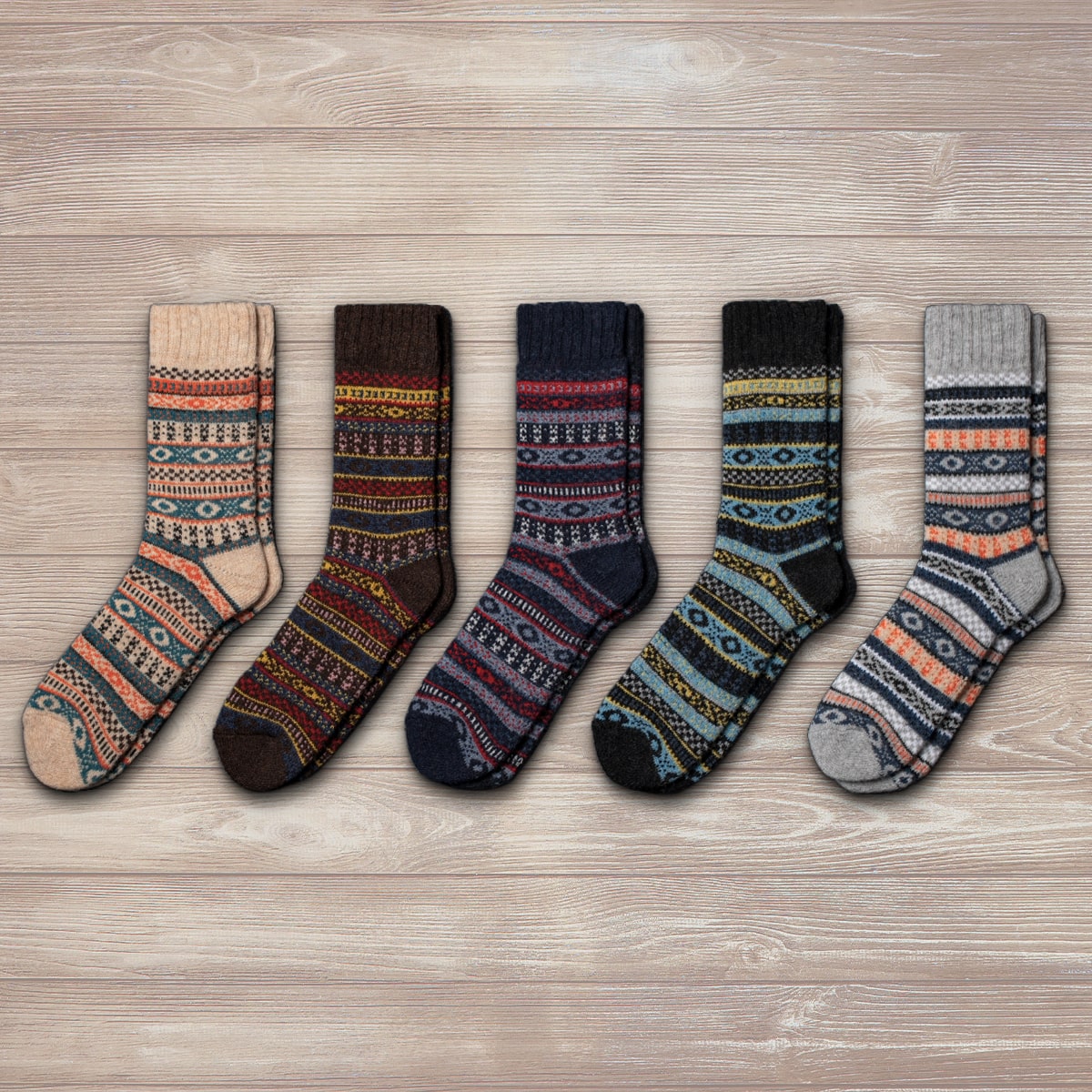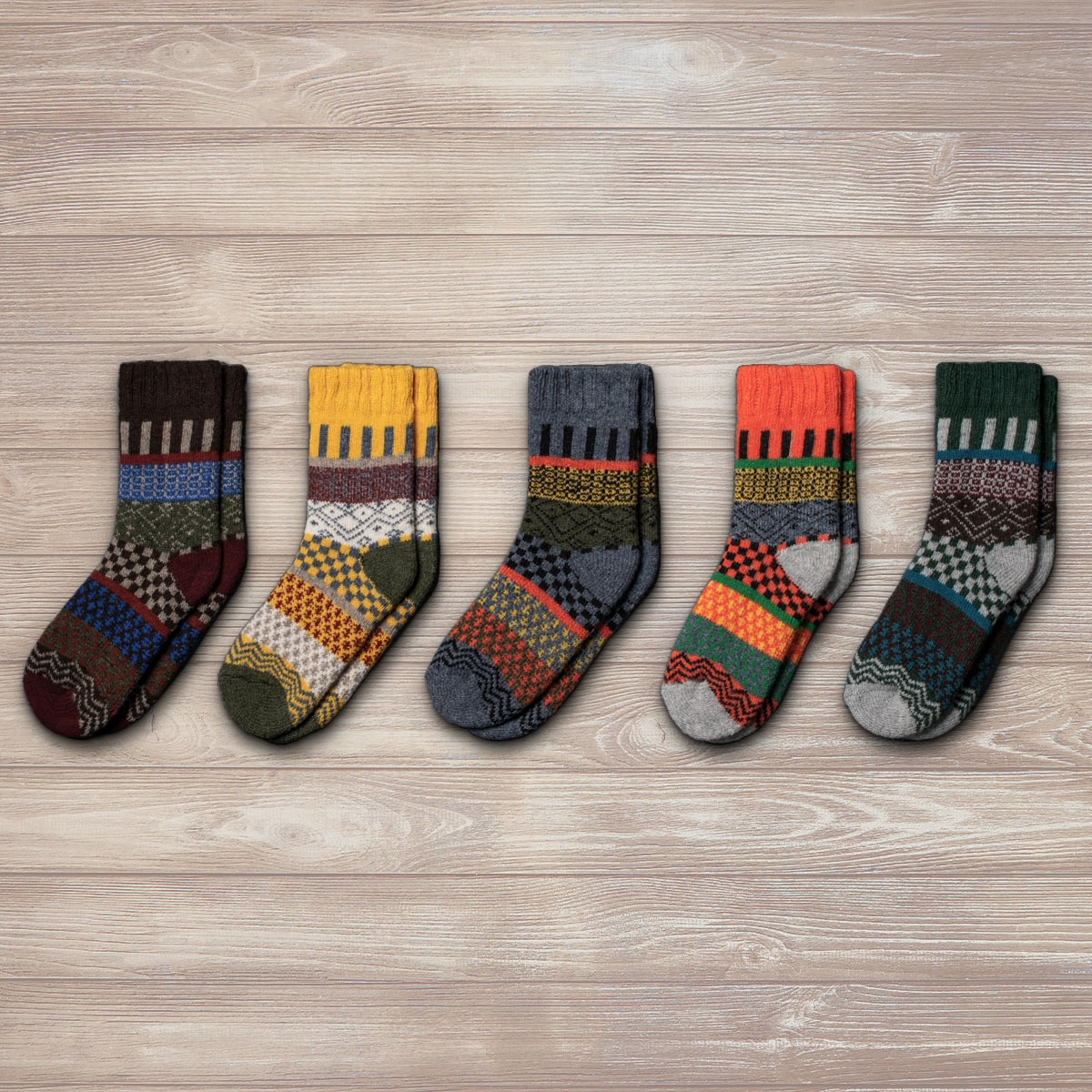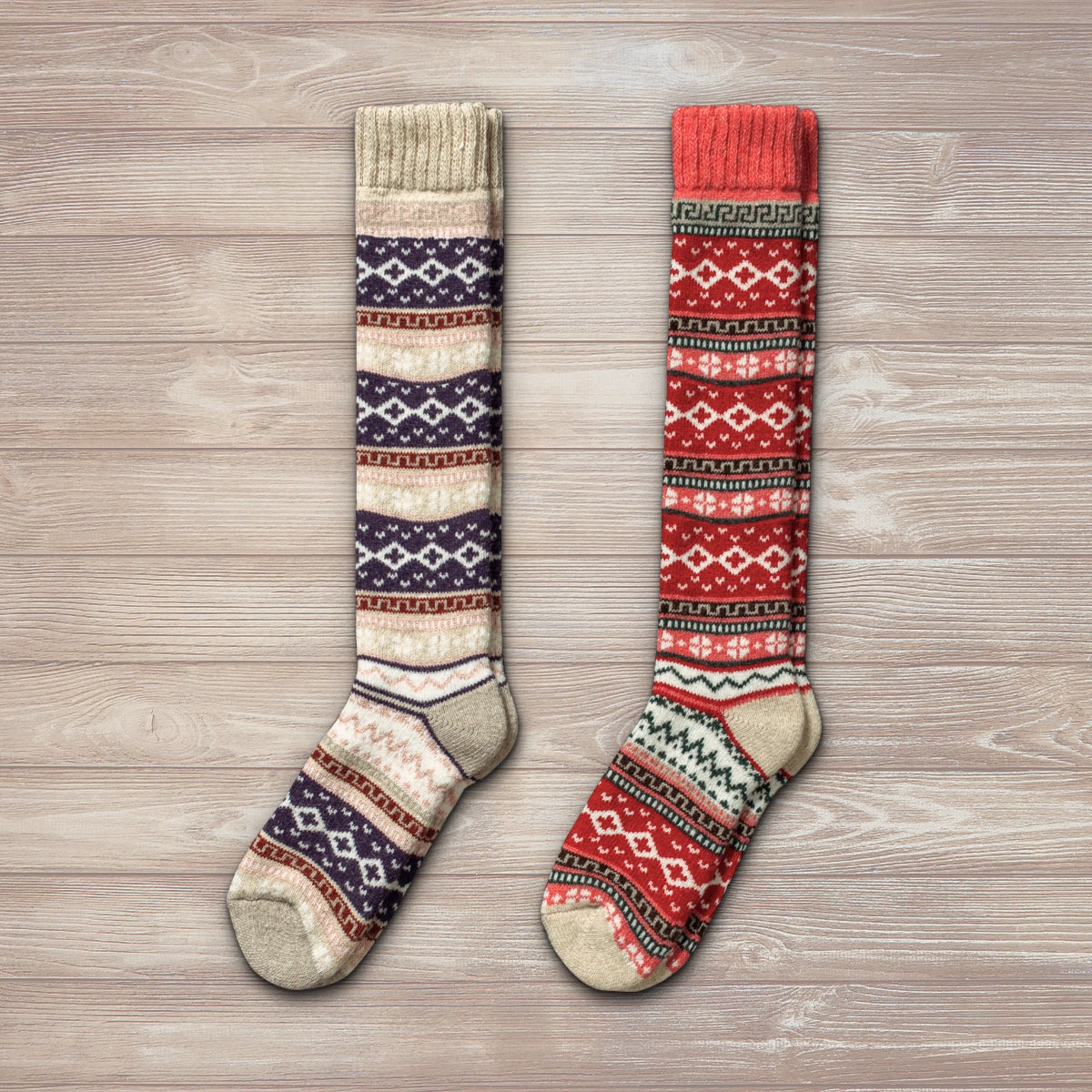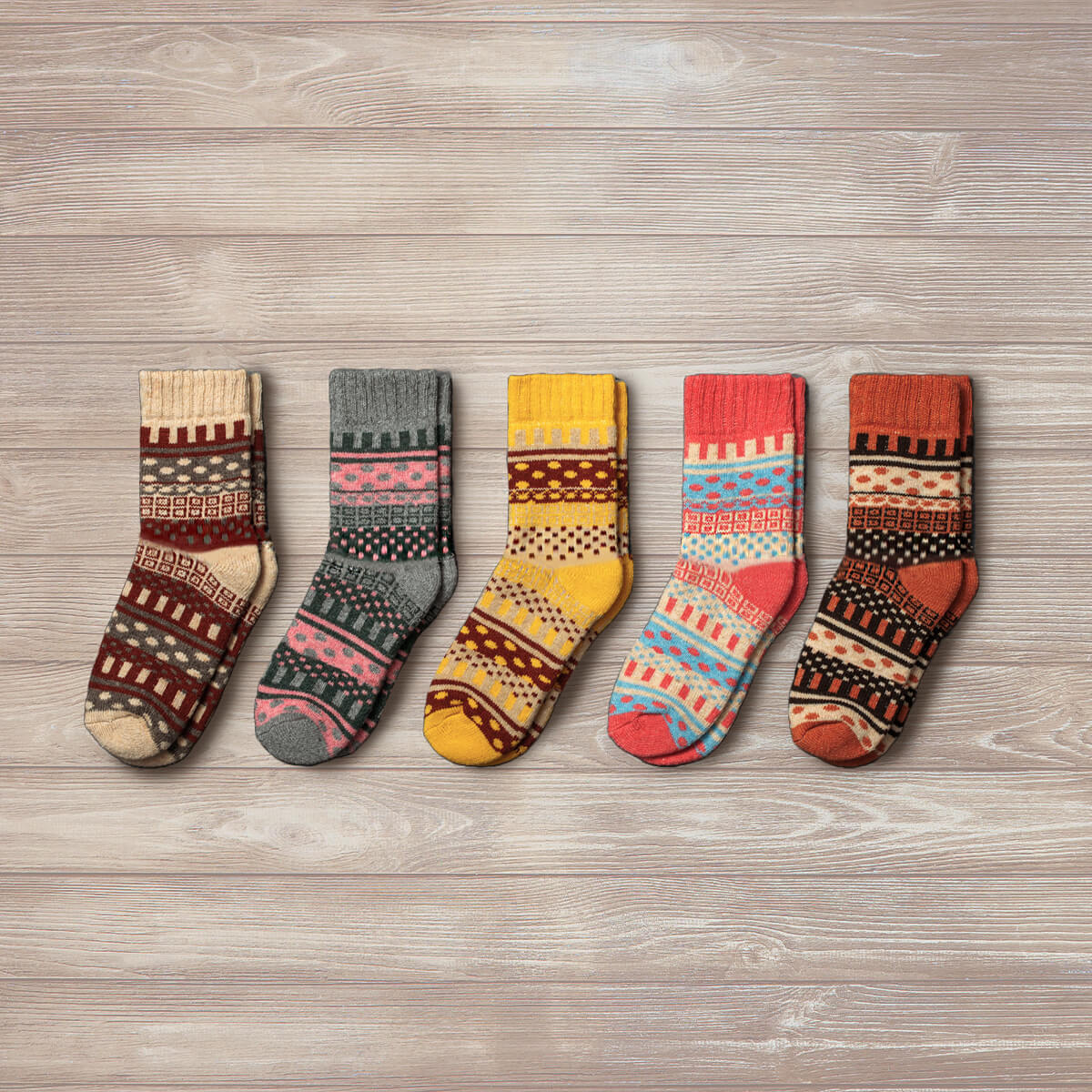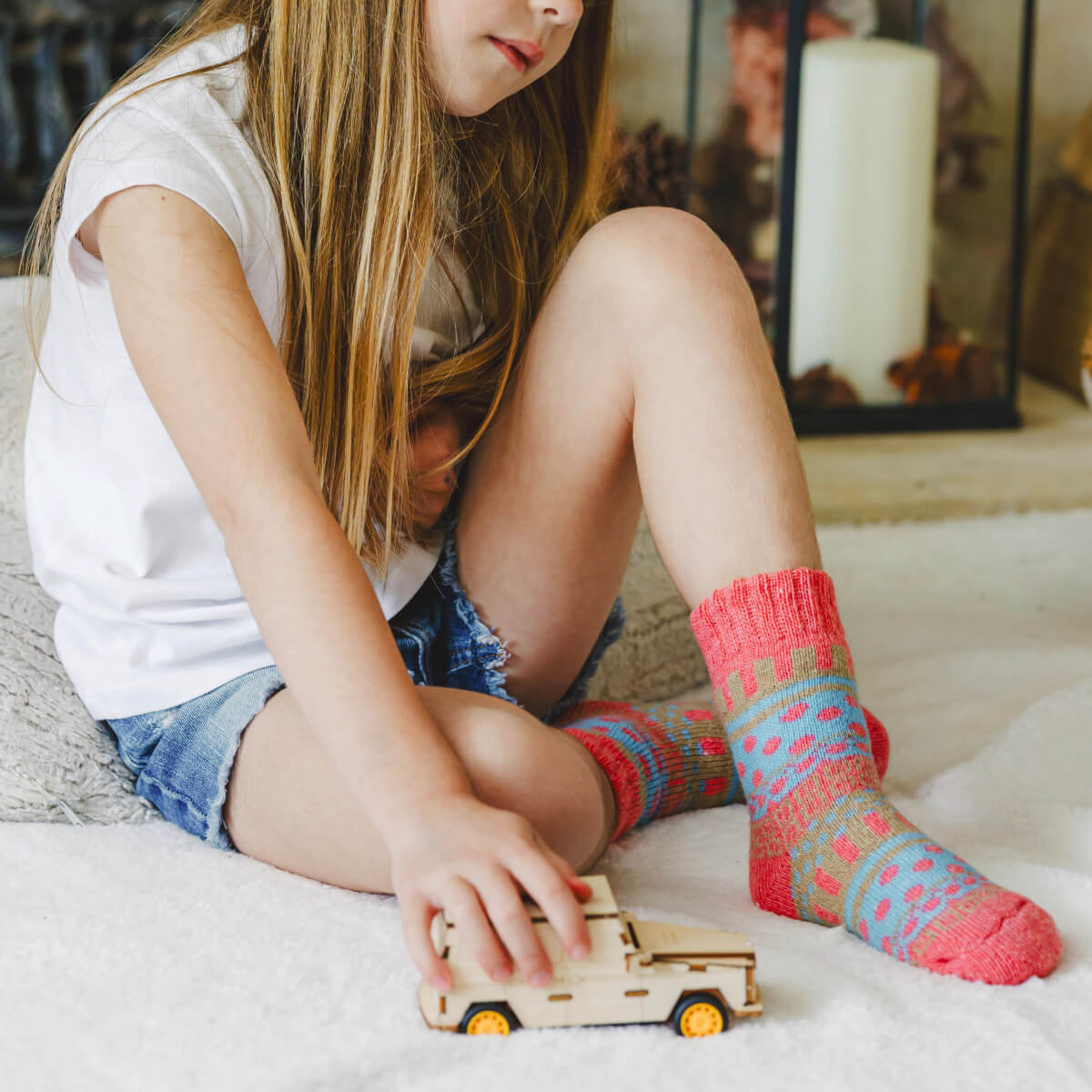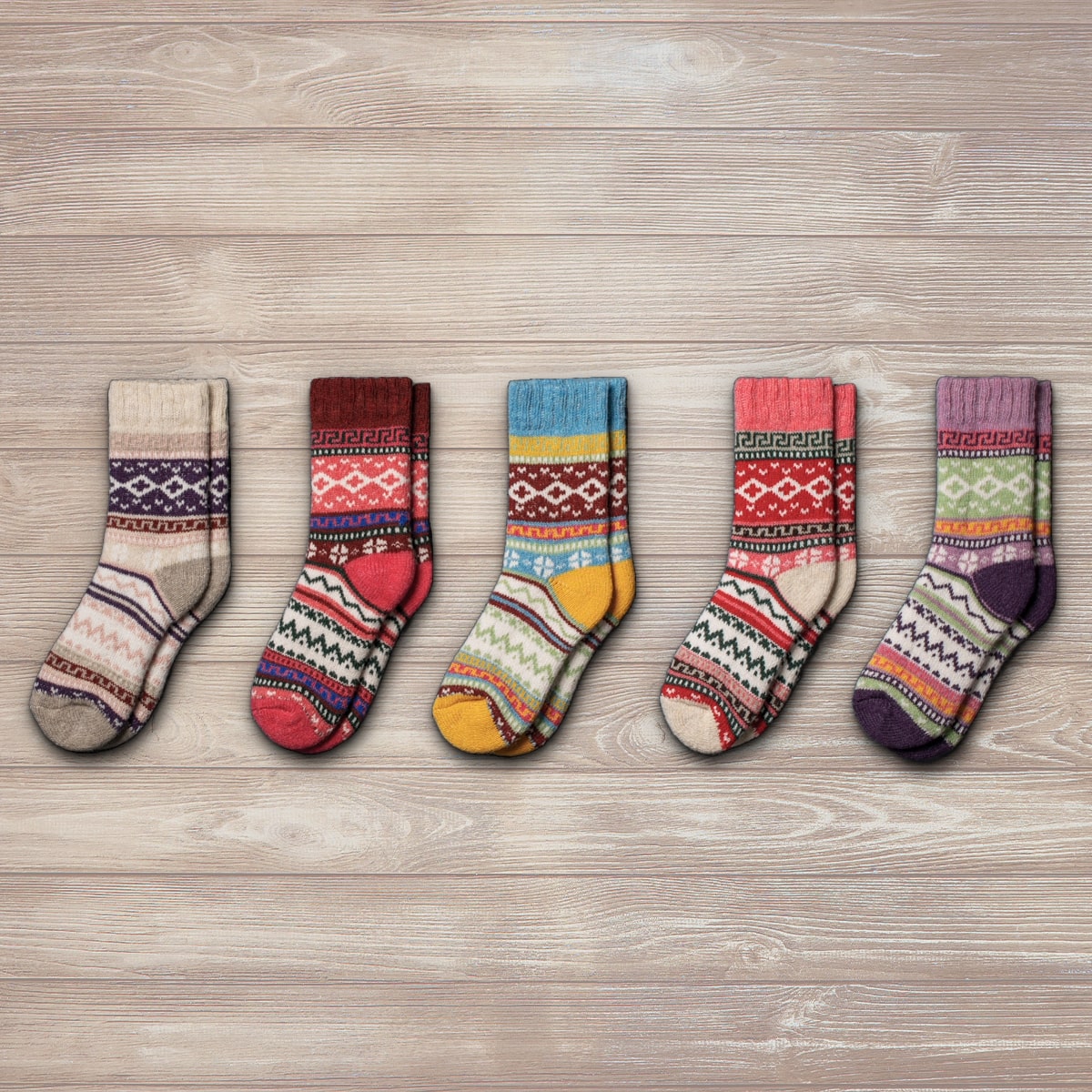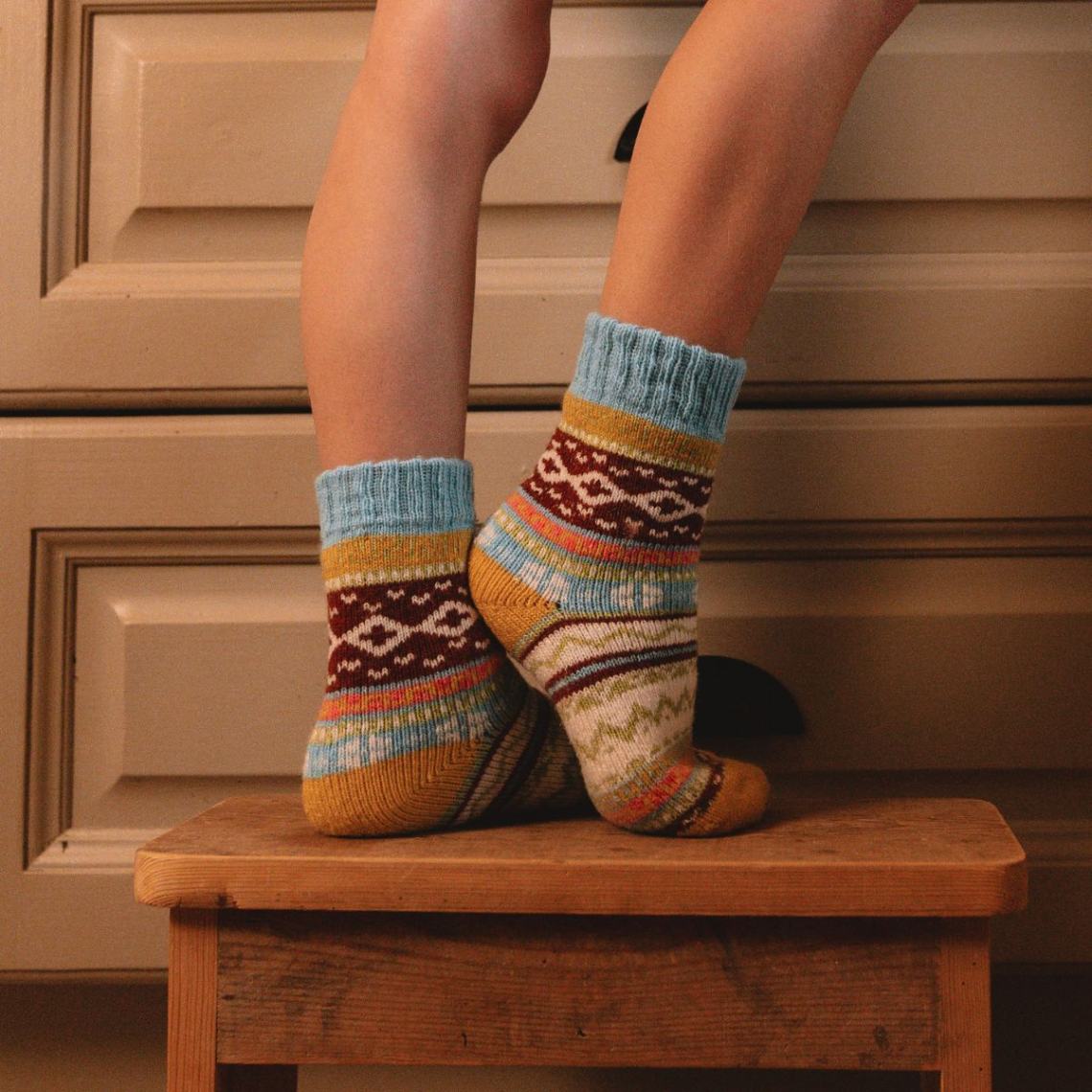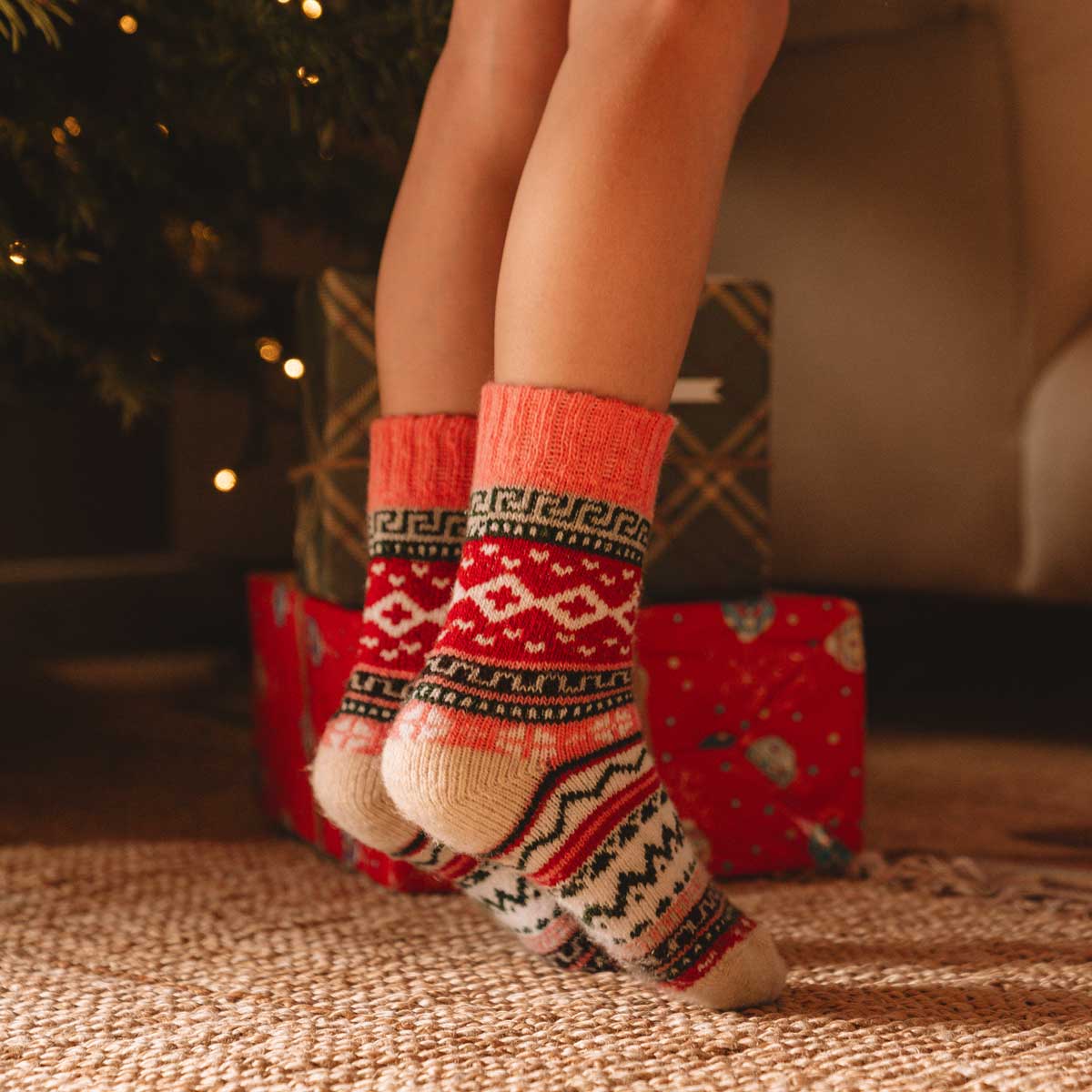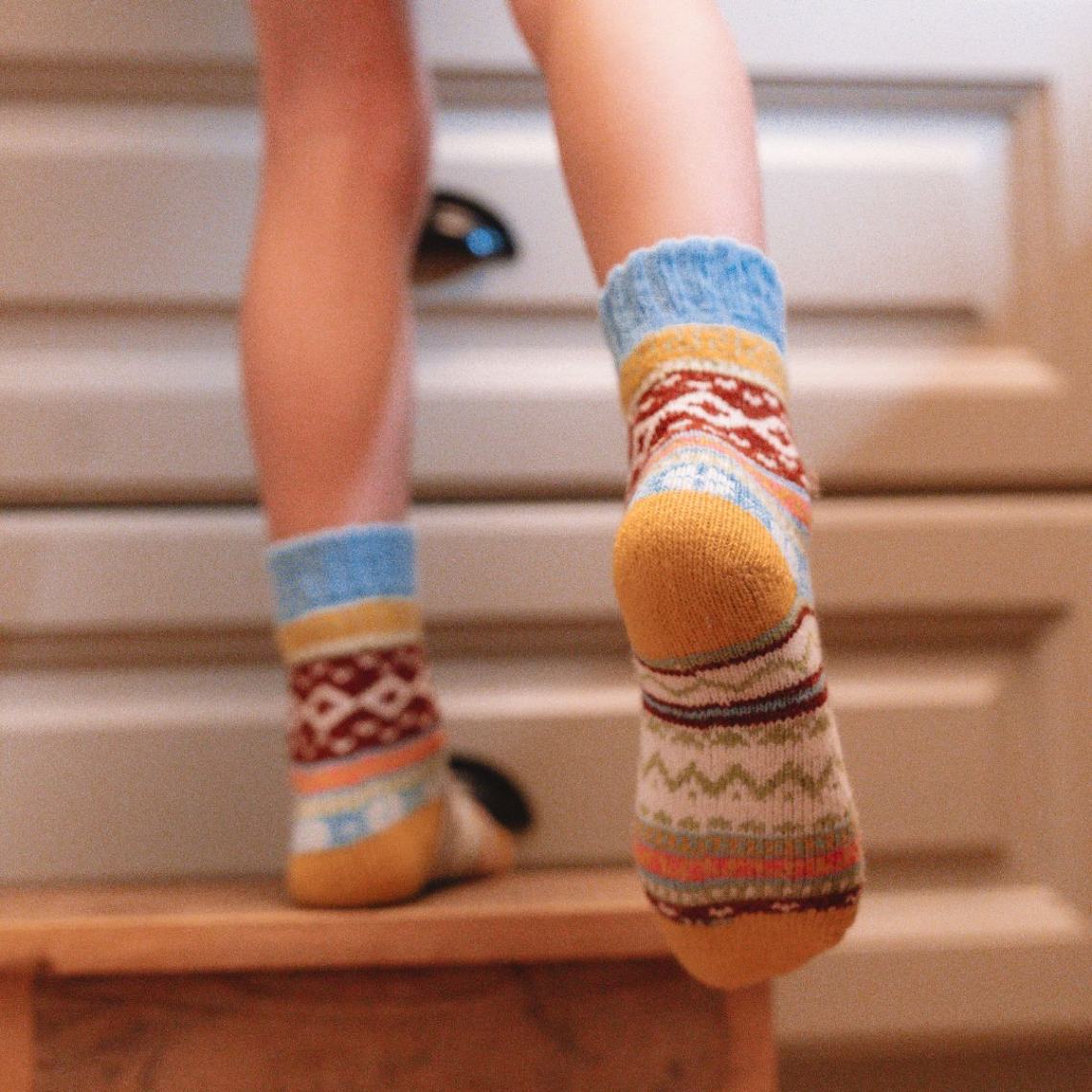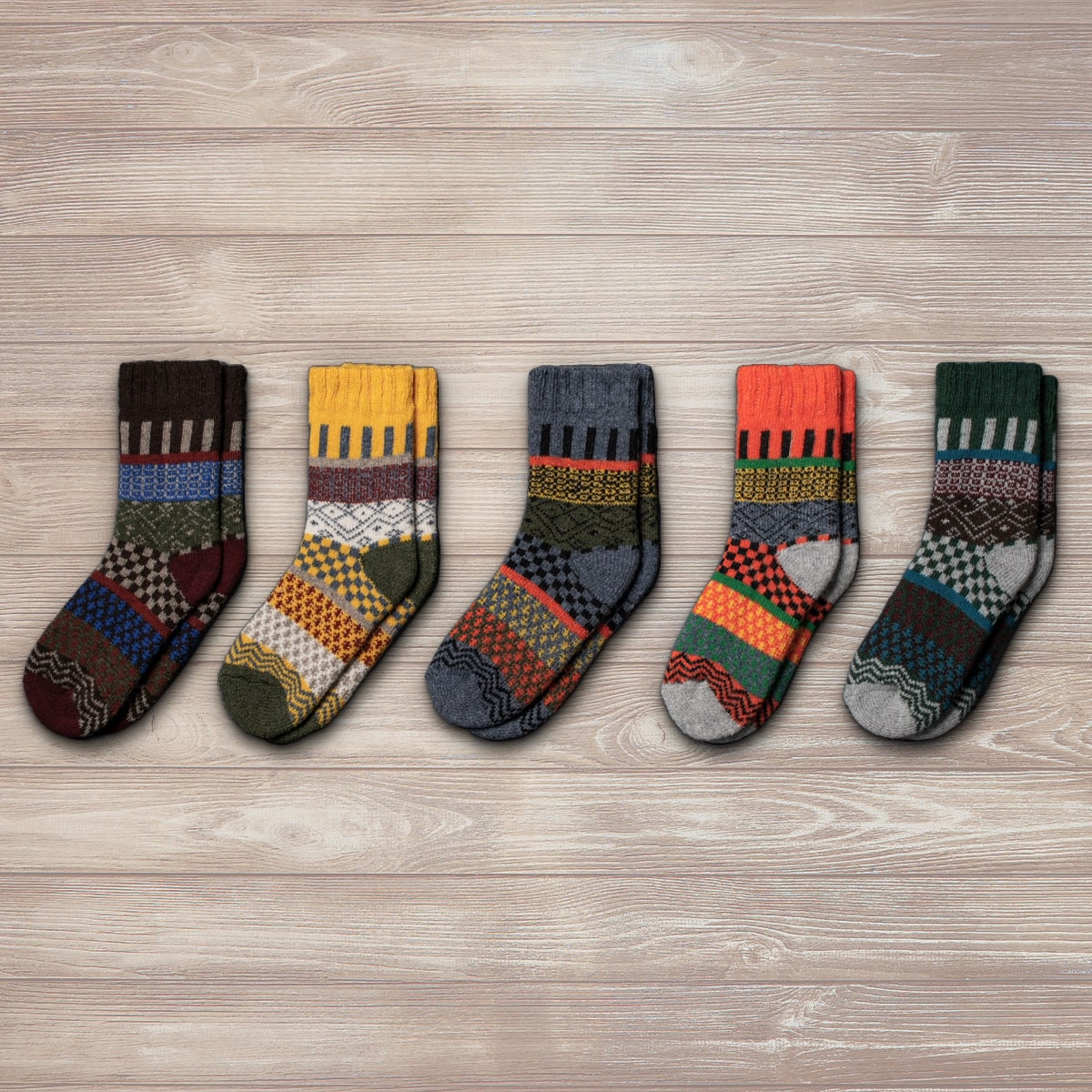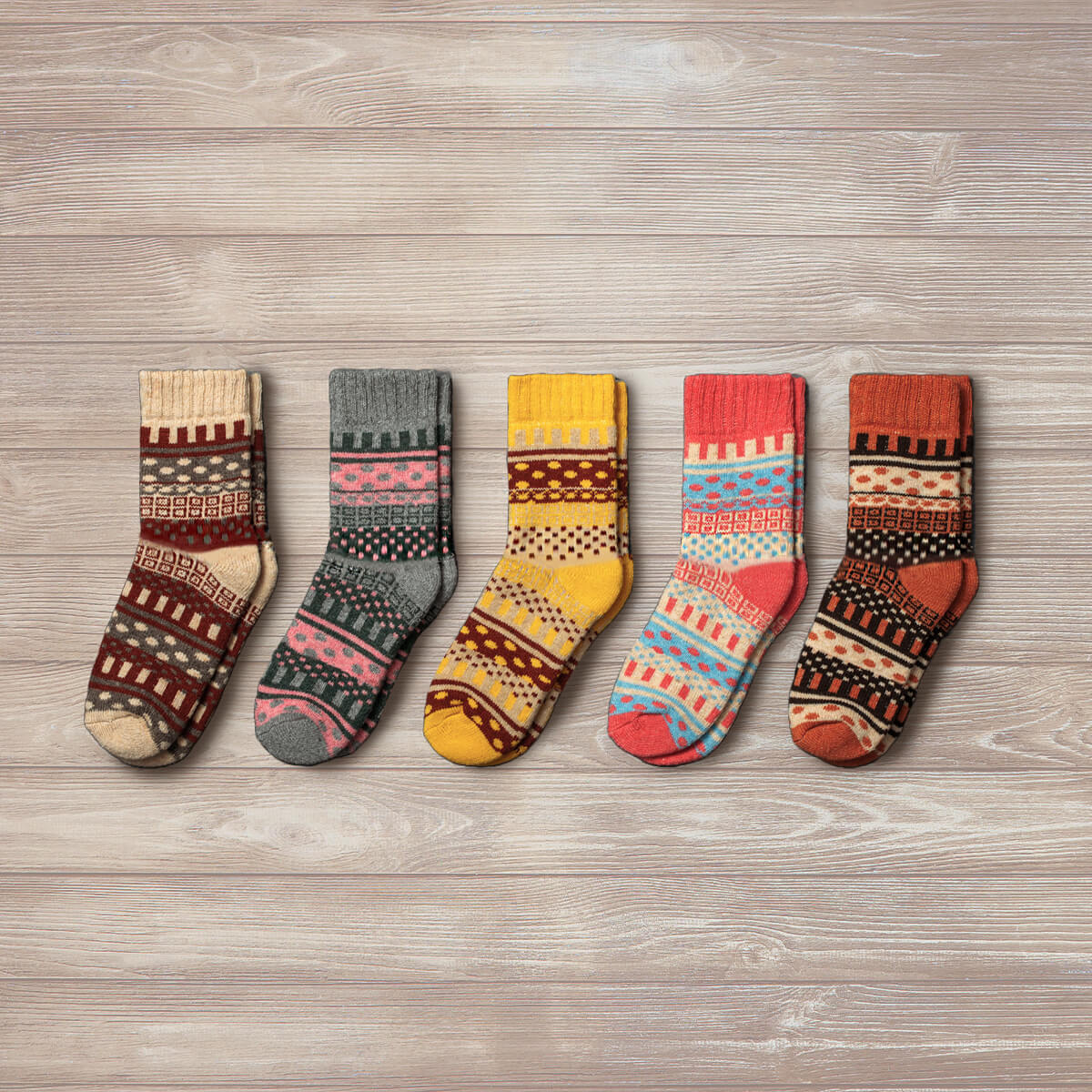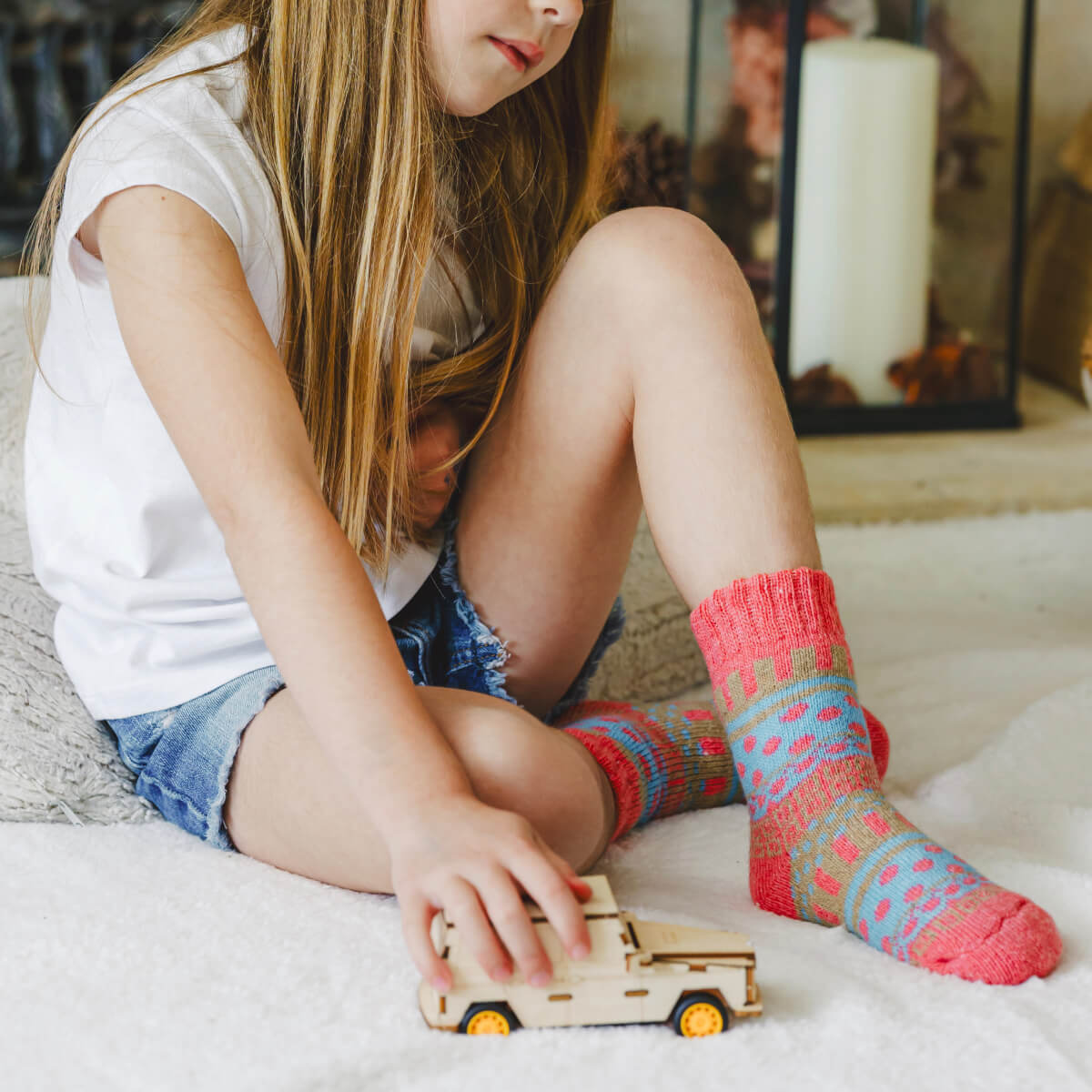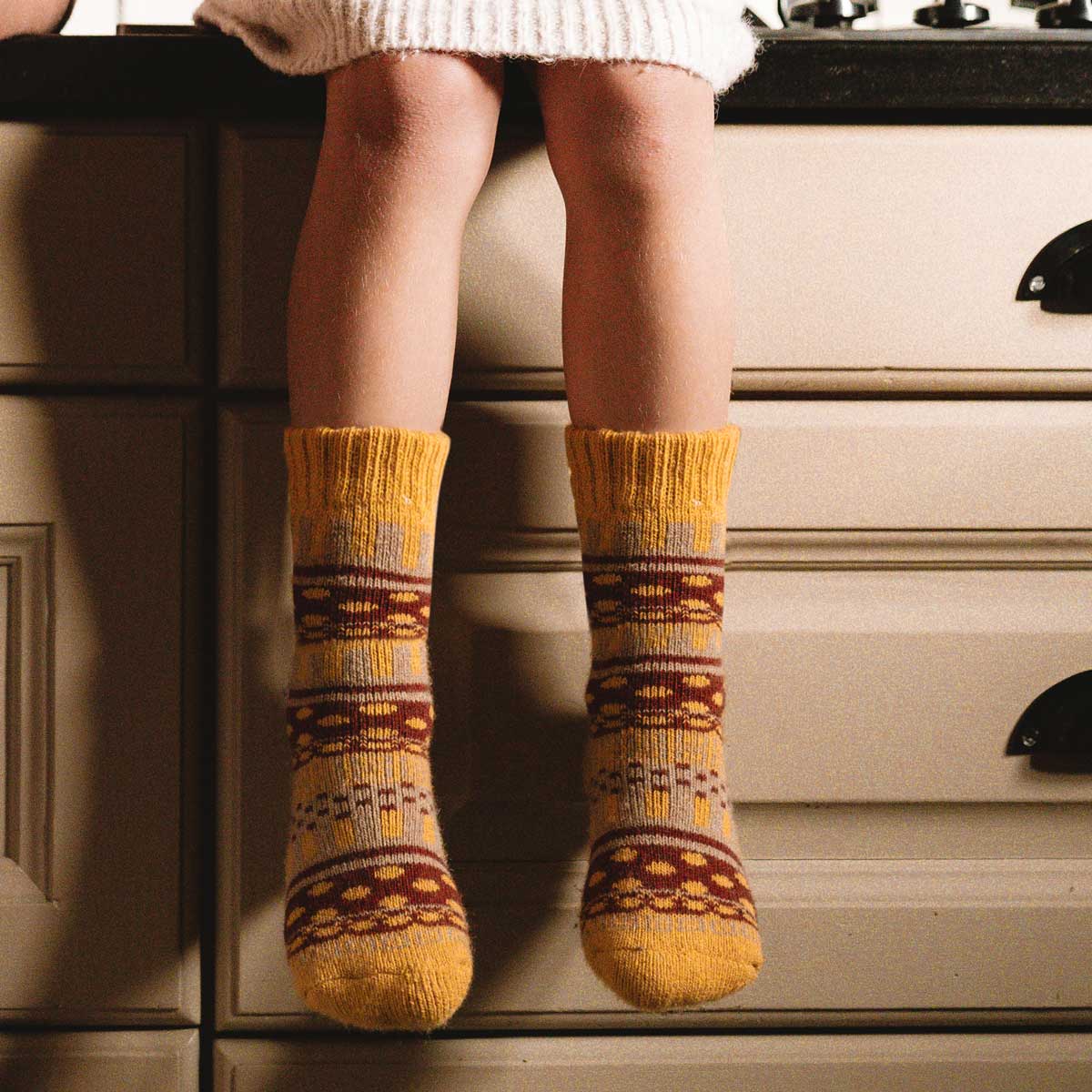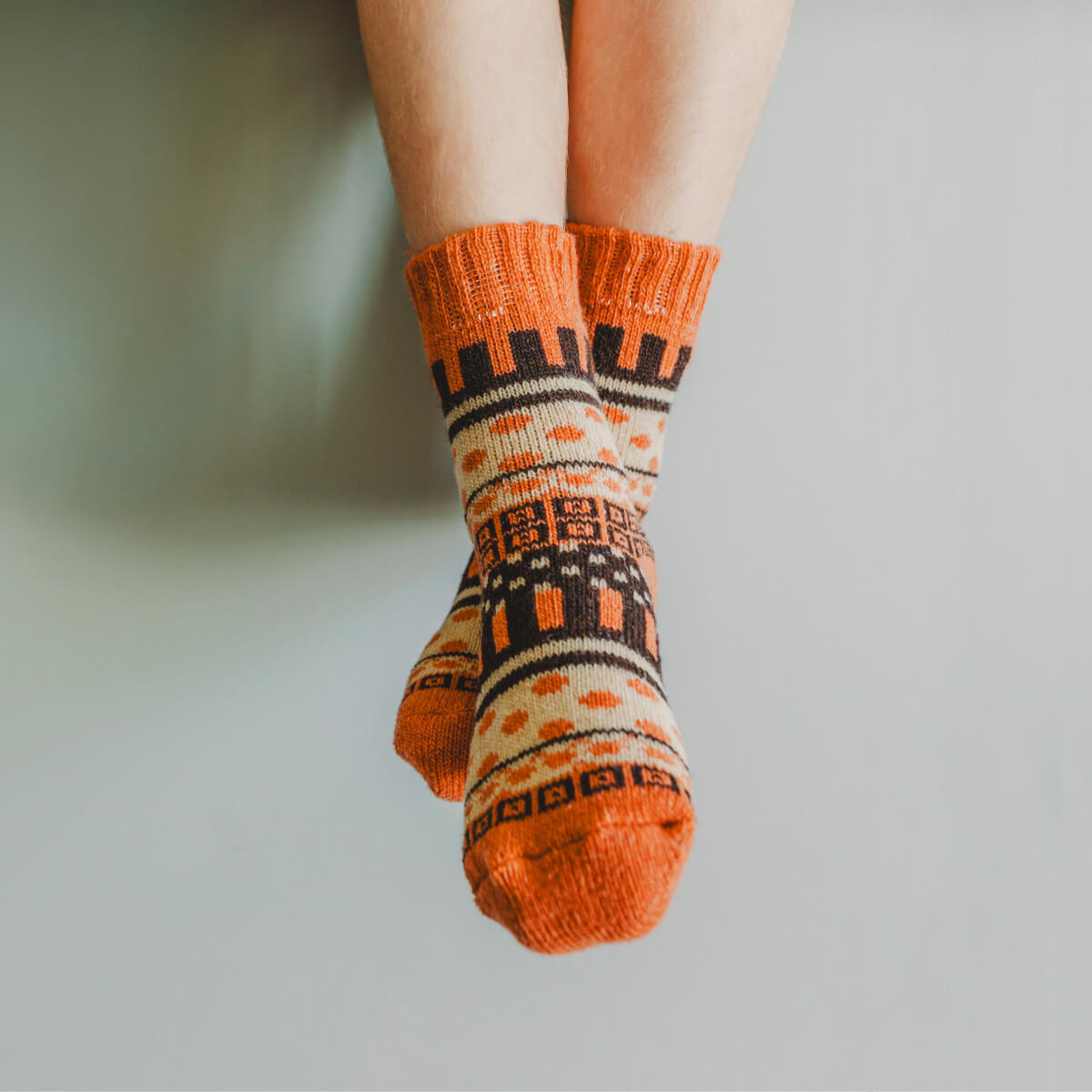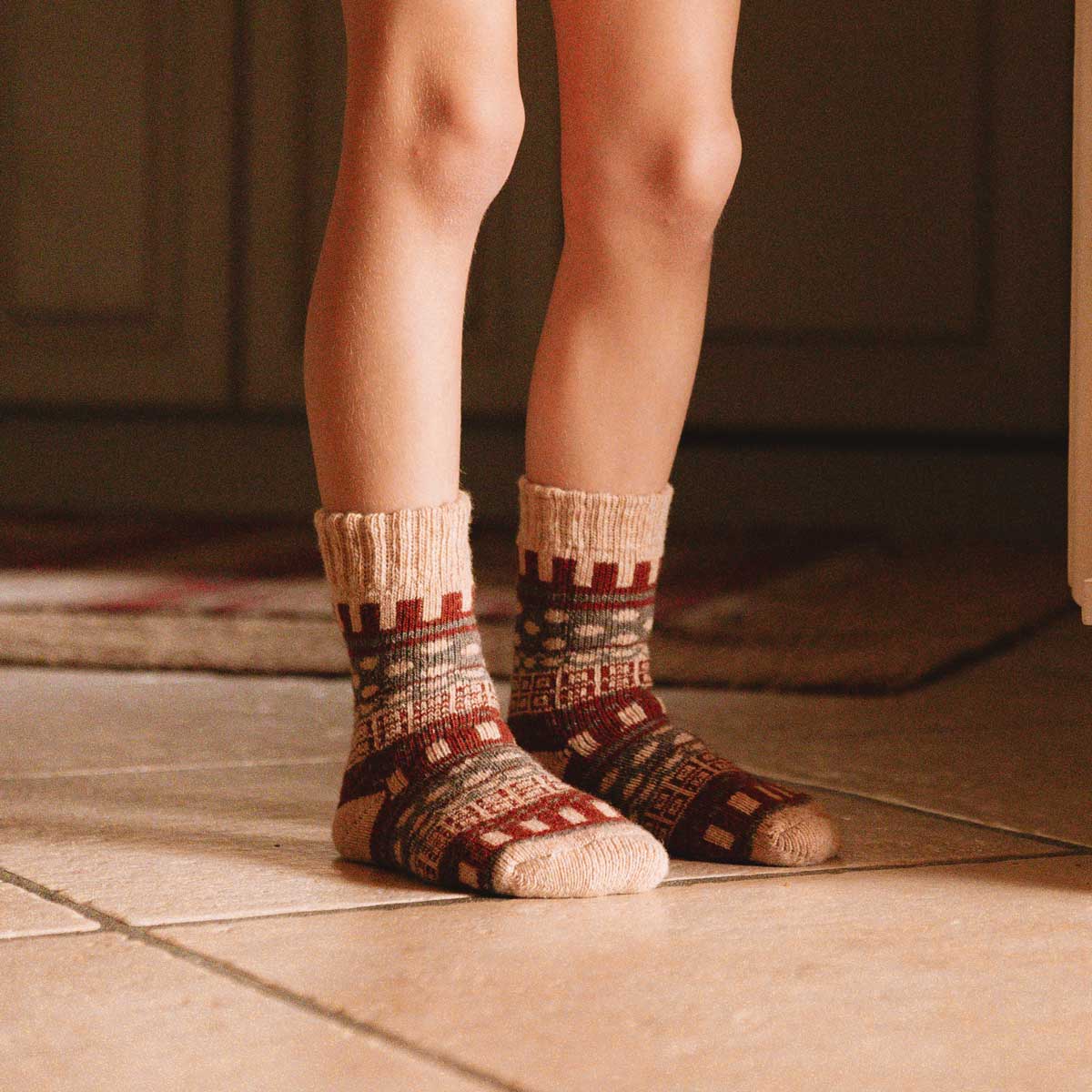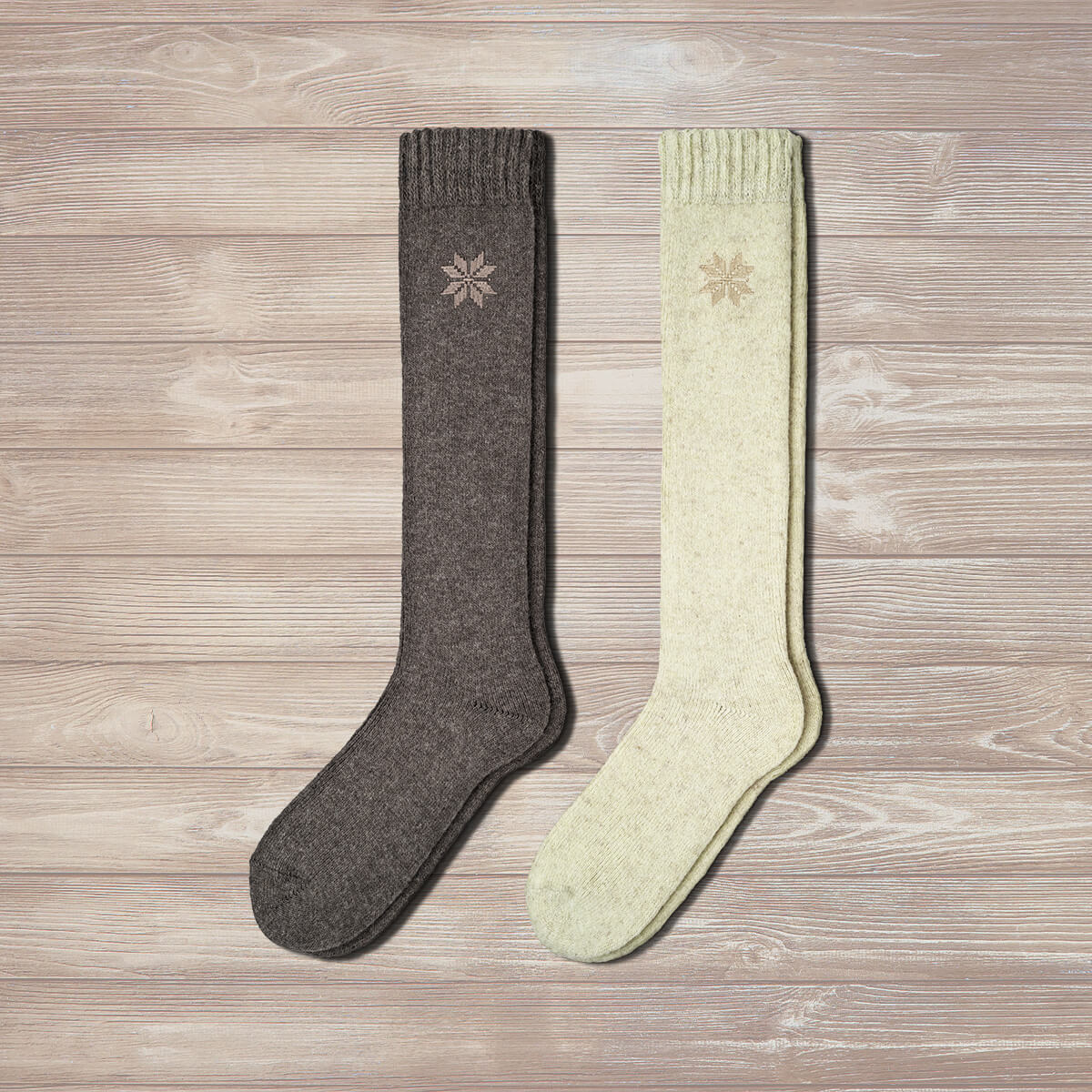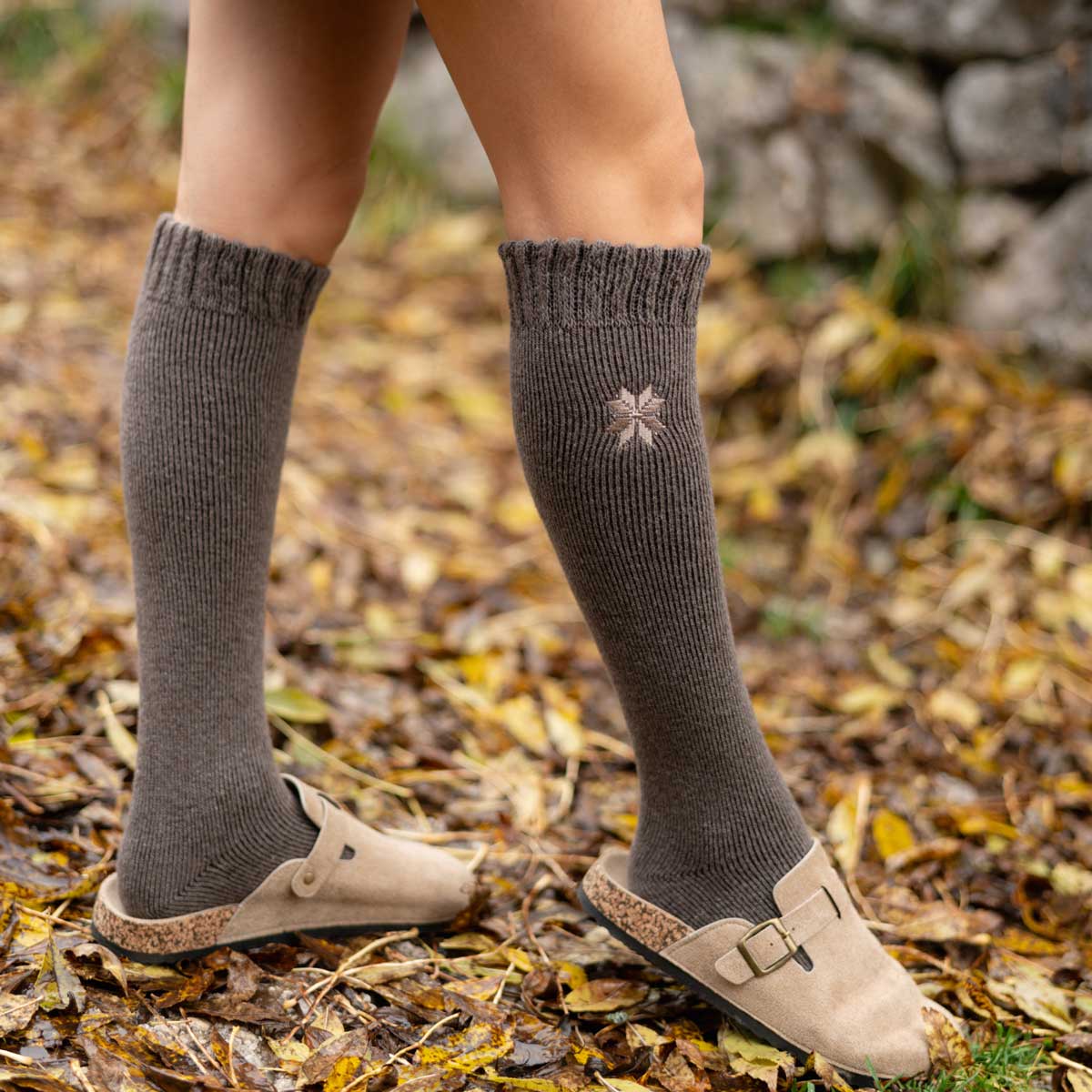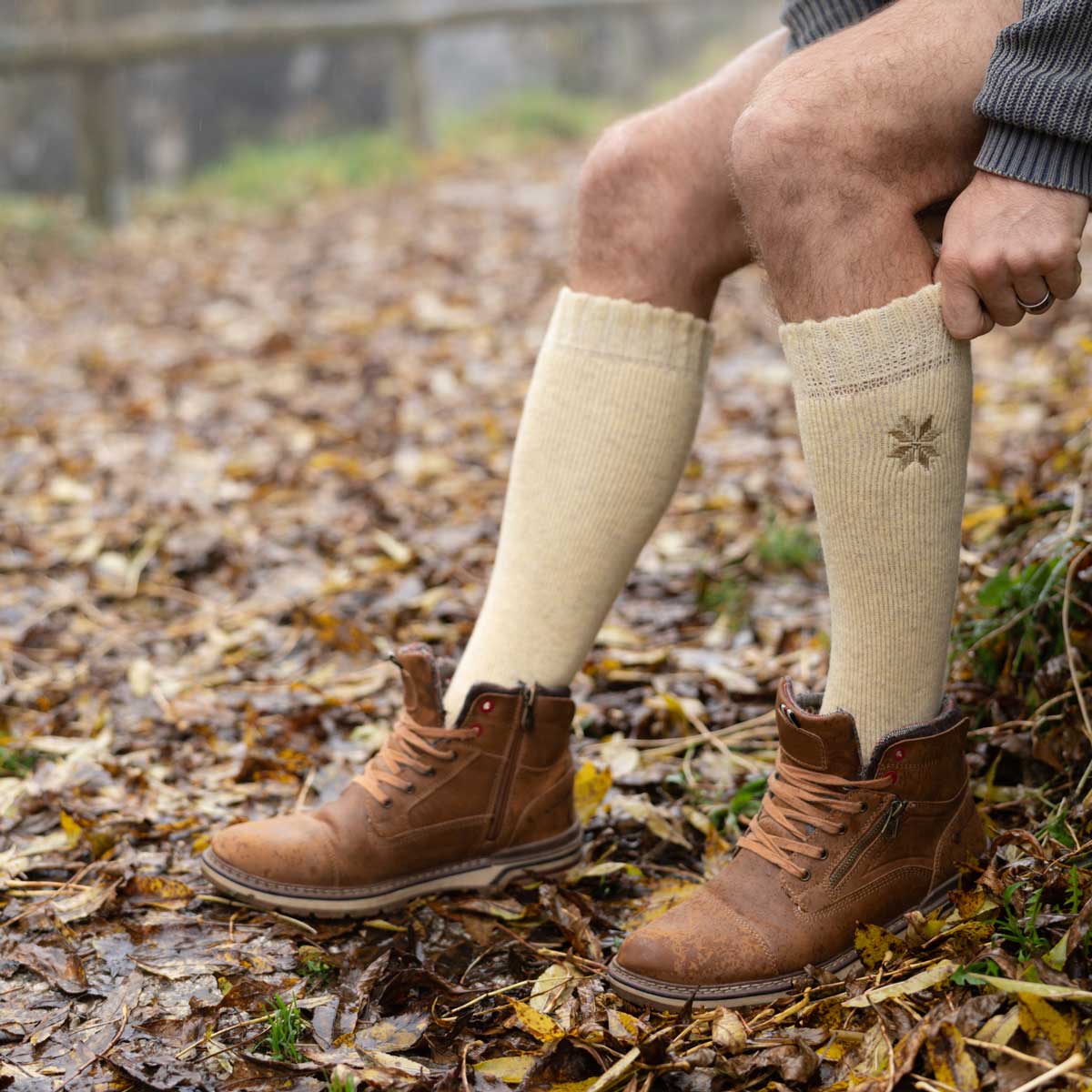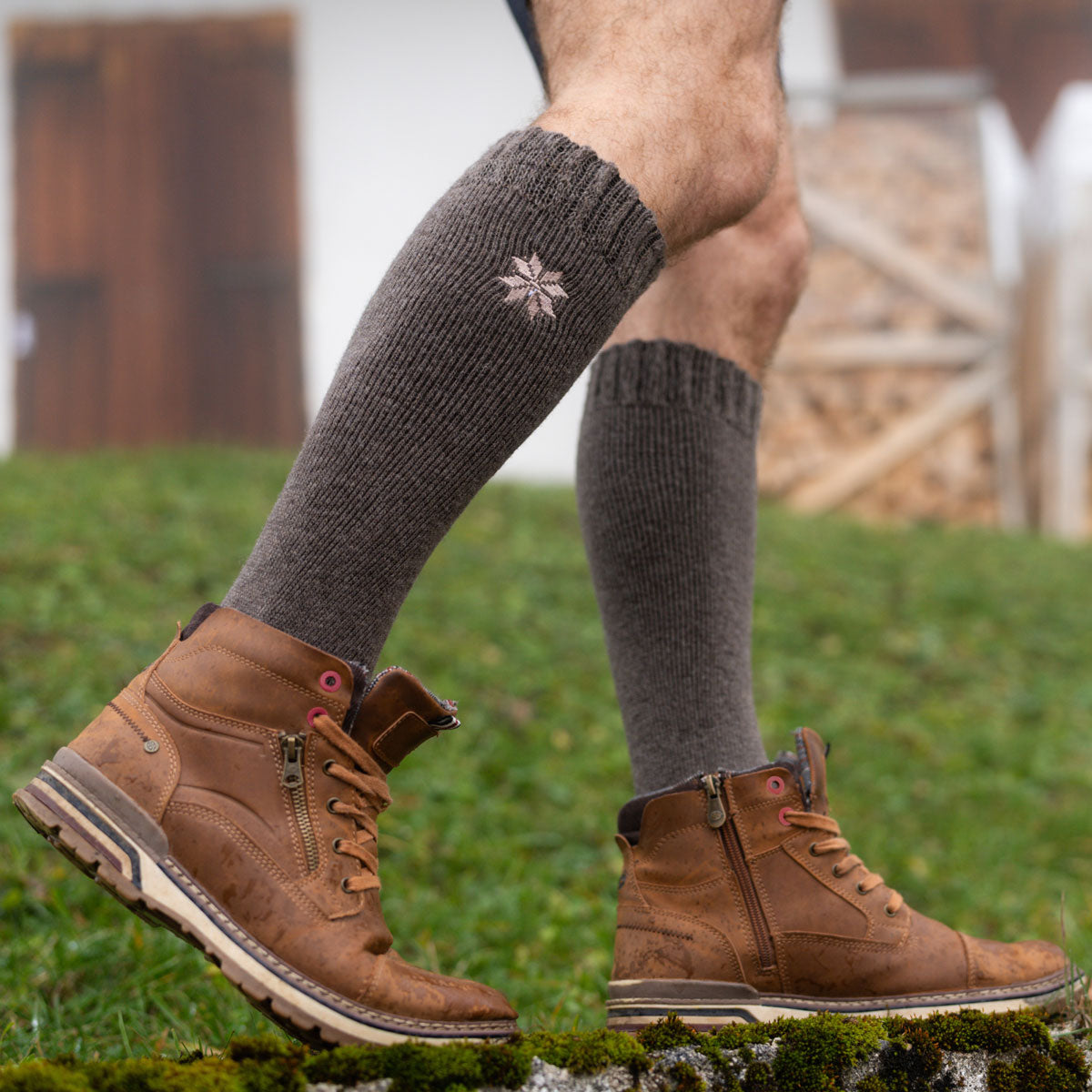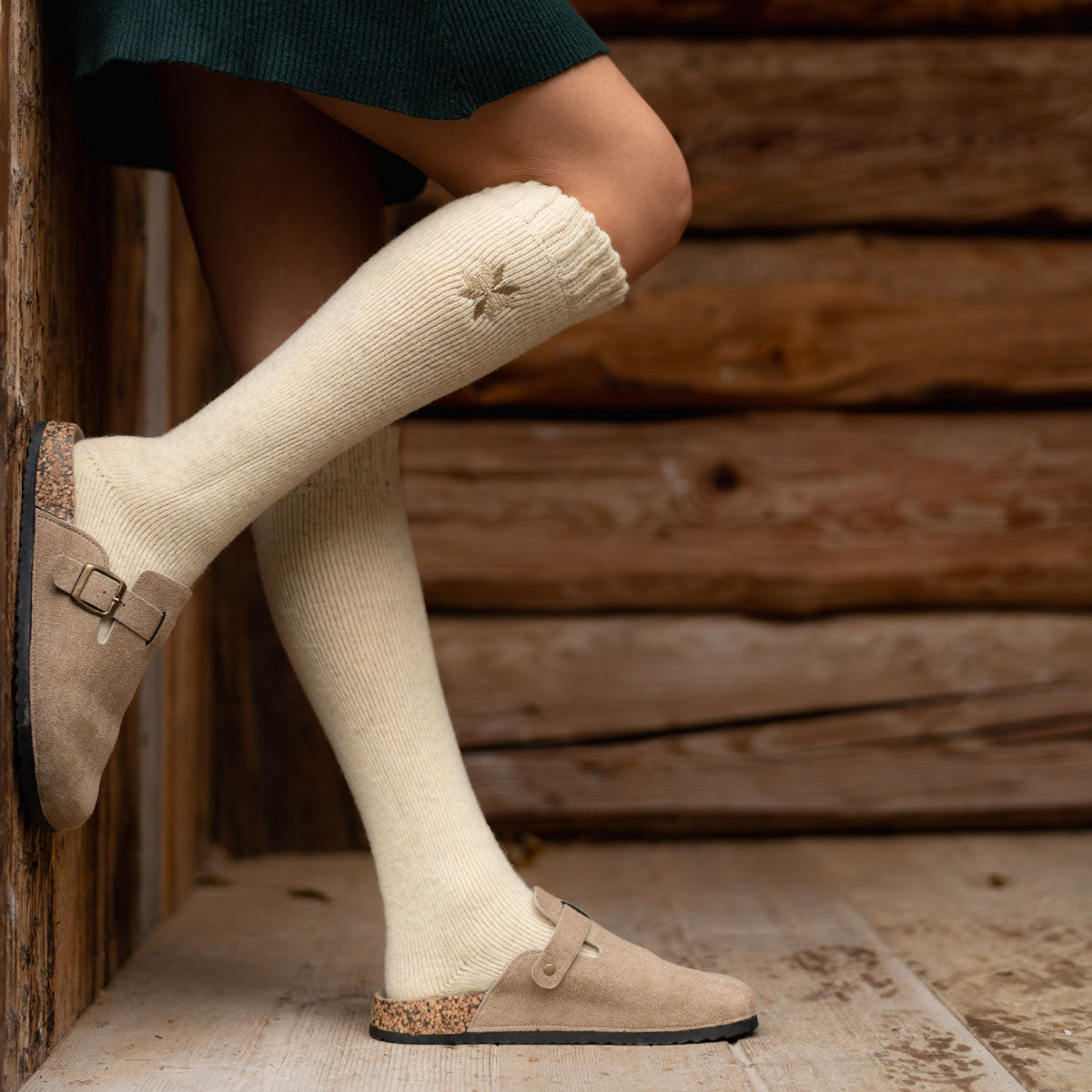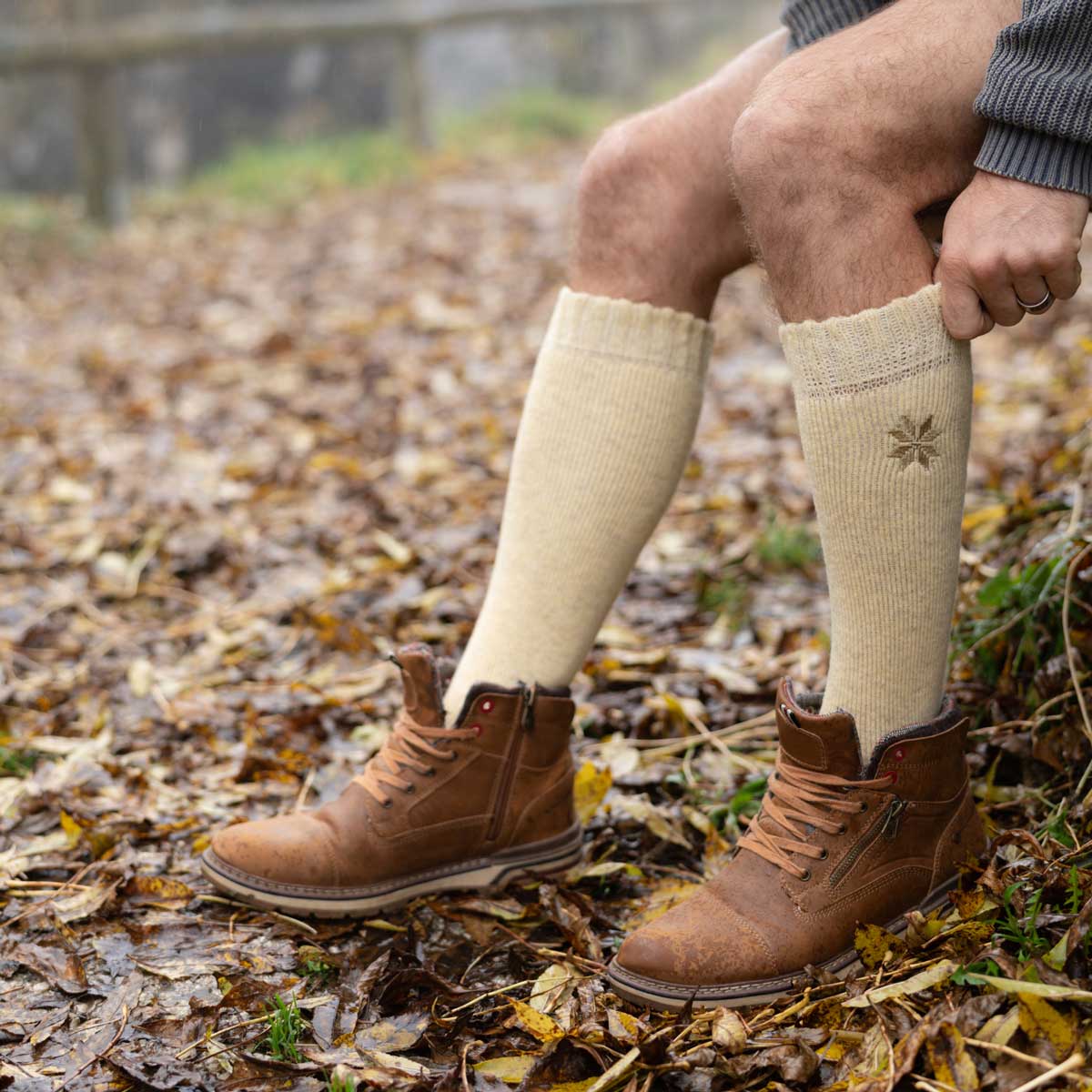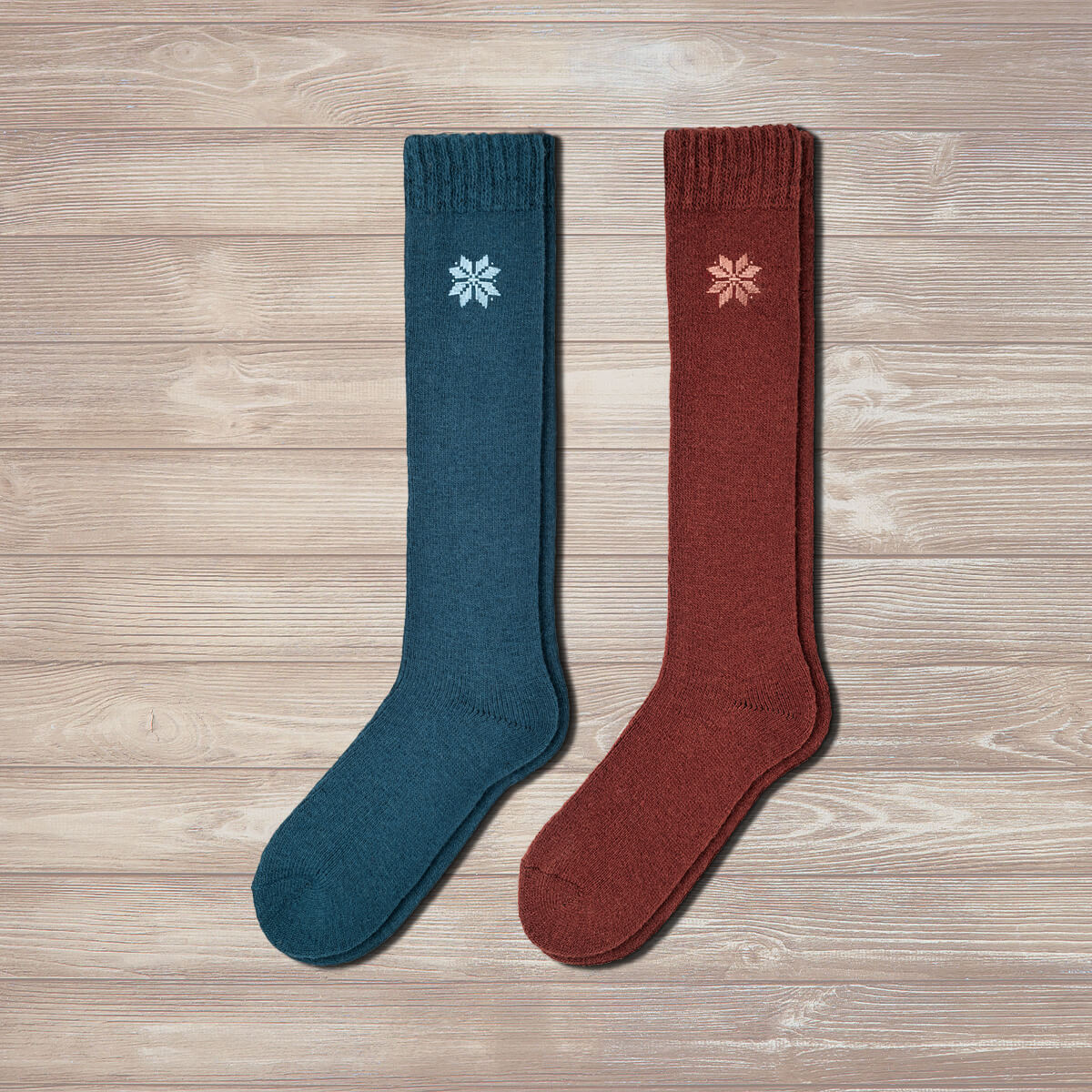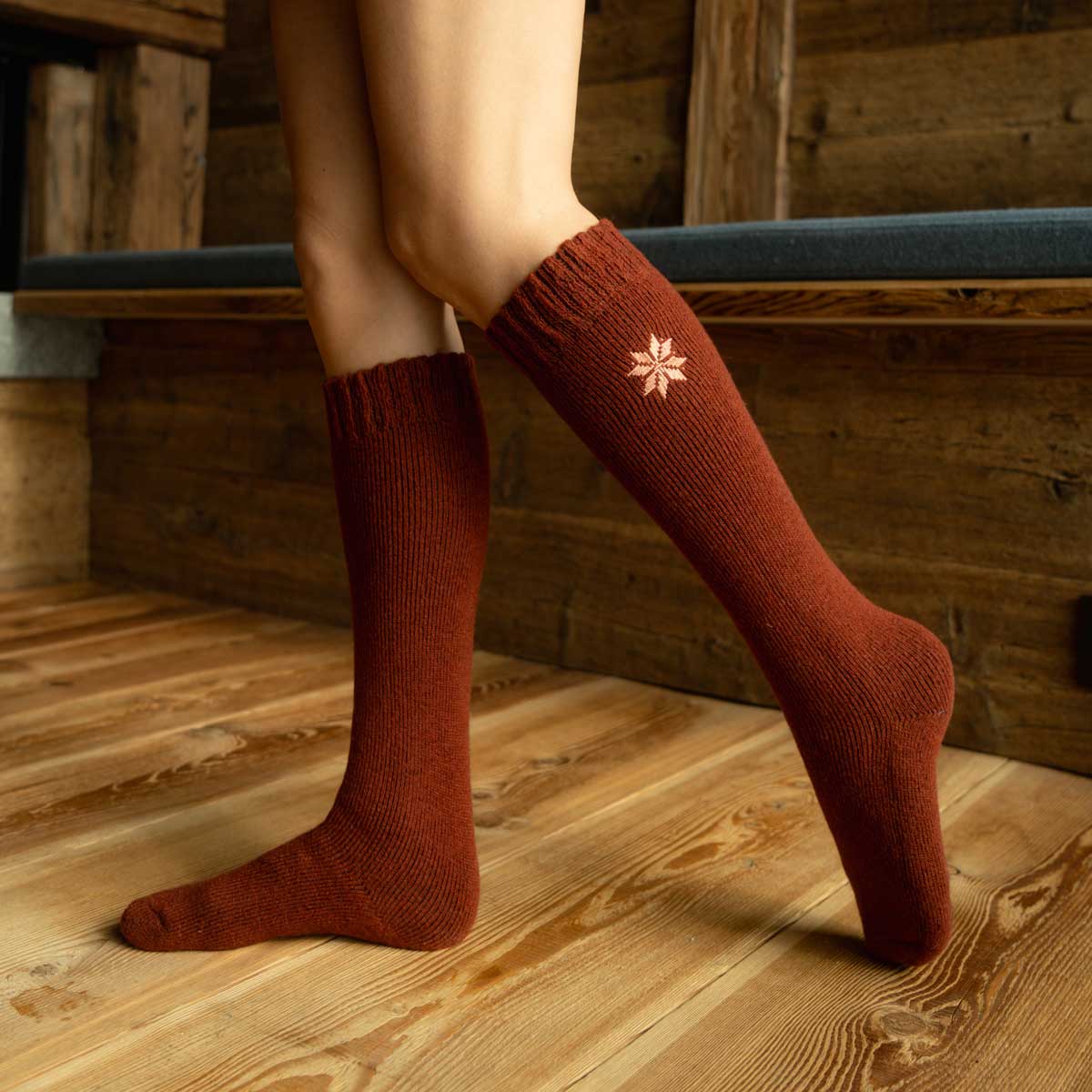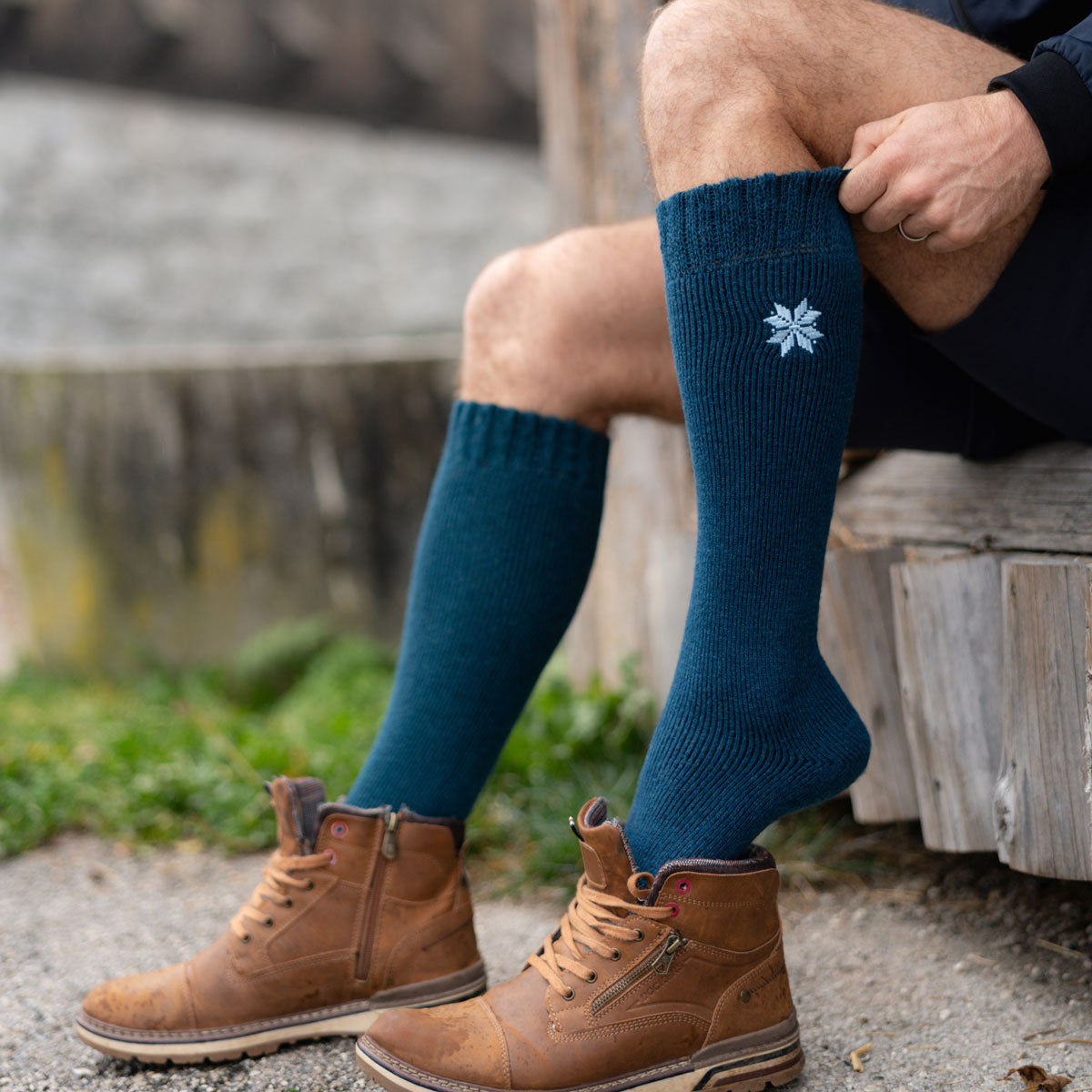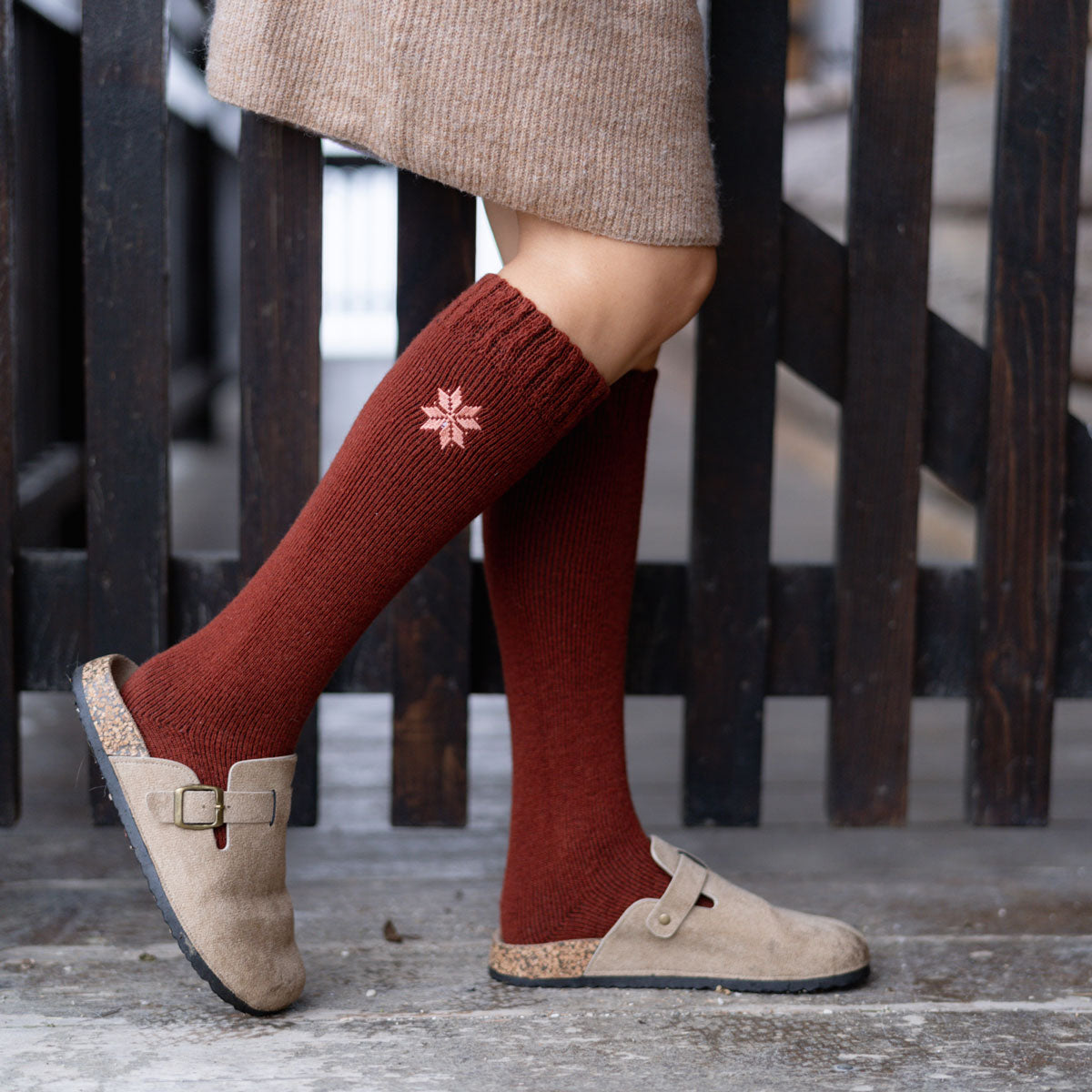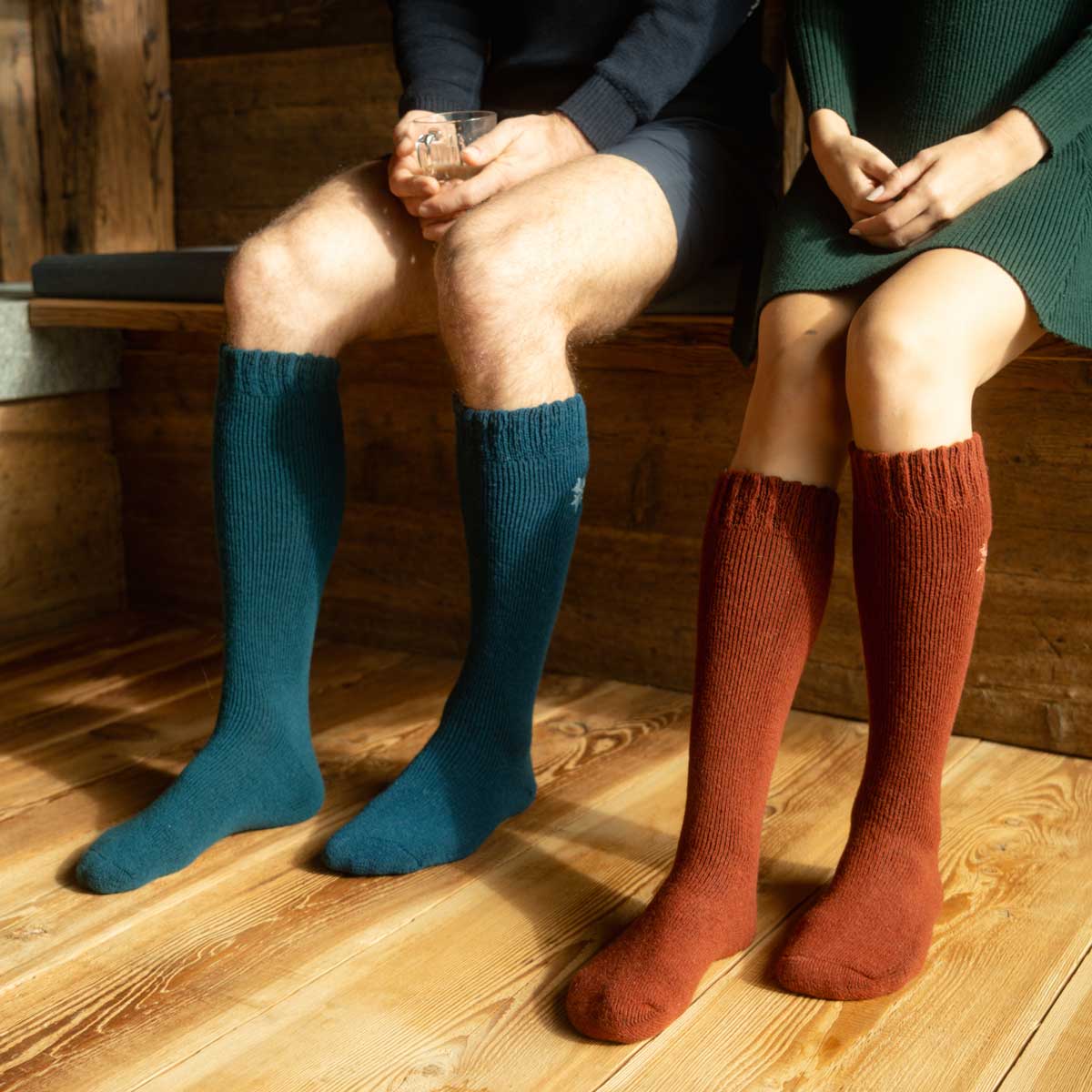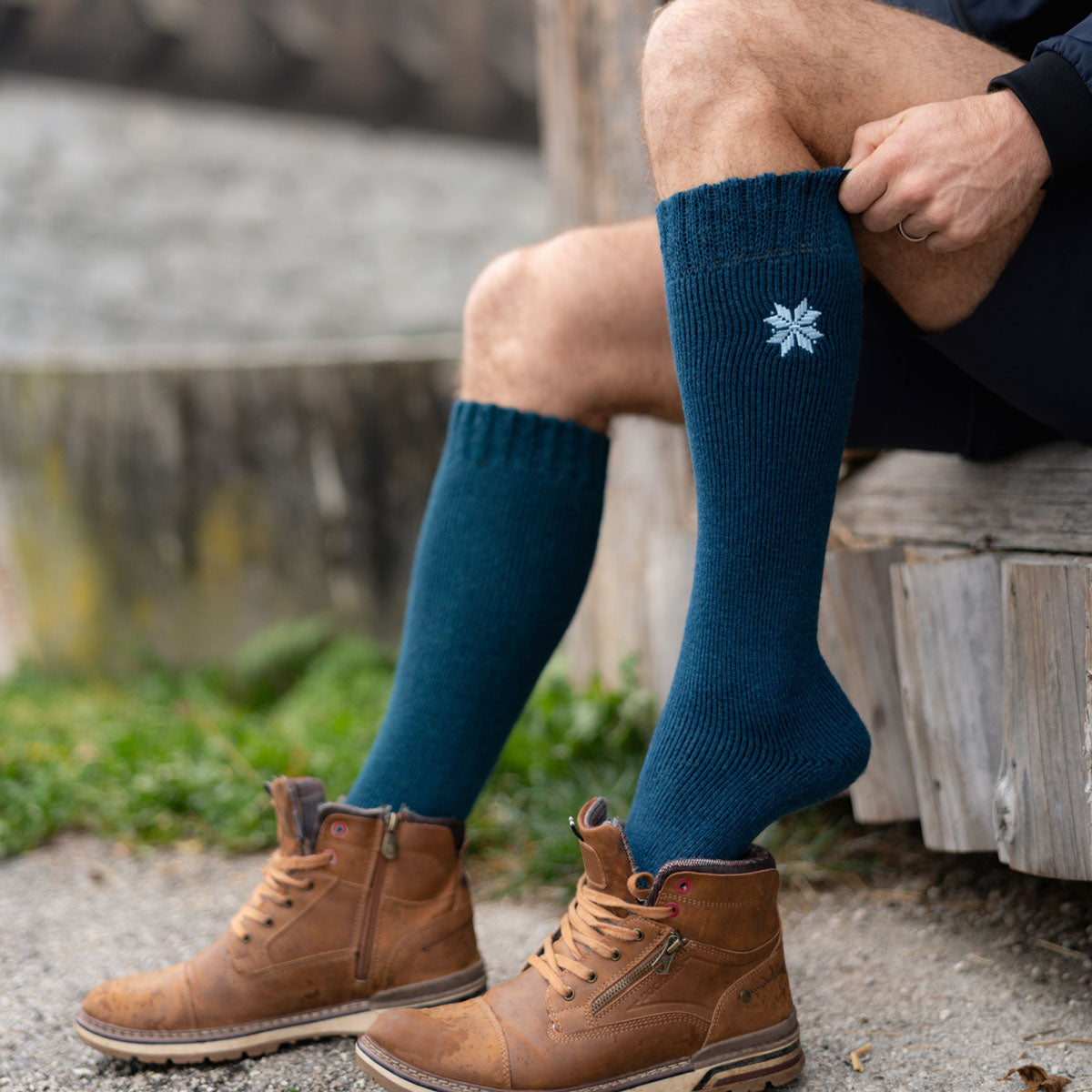Your Cart is Empty

Cotton, wool or cashmere - which material is best for socks?
8 min read
Choosing the right socks can make all the difference in comfort, durability, and performance. This article compares the three most popular natural sock materials—cotton, wool, and cashmere—highlighting their advantages, drawbacks, and best uses. While wool vs cotton socks remains a common debate, Merino wool stands out for its moisture-wicking and temperature-regulating properties, making it ideal for both summer and winter. For those seeking everyday comfort, cotton socks provide breathability but lack the insulation and durability needed for outdoor activities. Meanwhile, the best cashmere socks offer unmatched softness and warmth, perfect for lounging or light wear. Whether you're looking for cashmere socks for mens or ultra-cozy cashmere socks for women, this guide will help you find the perfect pair tailored to your needs.
We sometimes forget that socks play a major role in our wellbeing. Socks keep our feet warm or cool, depending on the season, and they are designed for many different purposes. It’s important to knowwhich material is best for socks, according to your needs and to your lifestyle.
The fabric can provide all the necessary details about the quality and usefulness of your socks. The most common fabrics that are used in making socks are cotton, wool, cashmere, bamboo, polyester, nylon, spandex and acrylic. Usually, socks are created from a blend of 3 or 4 materials, and each fabric serves a different purpose.
In this article we will discuss the most popular three fabrics out of which socks are being manufactured: cotton, wool and cashmere. We will discuss the advantages and disadvantages of these natural fabrics in the attempt to answer the big question: “Which material is best for socks?”.
The selection criteria should be: comfort, drying speed, absorption capacity, breathability, insulation and durability. The right materials and the thickness of the socks will ensure that your feet remain warm (or cool, depending on the season) and dry, regardless of the weather that you encounter. The best advice that we can offer is to choose your socks according to your needs, to your daily activities and to the fabric that feels most comfortable to your feet.
Cotton - the best material for everyday wear

Cotton is a natural fiber that has been used for clothing since ancient times. Even today, cotton is used at a large scale to create quality socks and garments. This fabric is preferred by many people, due to its breathability and softness. Because it’s completely inelastic, cotton is often combined with elastic fibers (such as elastane) that easily takes on the shape of the body.
When considering wool vs cotton socks, it’s important to note that cotton excels in breathability but lacks the moisture-wicking and insulation properties of wool, making it better suited for everyday casual wear rather than outdoor activities.
Advantages of cotton socks:
- Soft, yet durable - cotton is delicate to the skin, but also resistant
- Allows the skin to breathe - because it is a natural fiber, cotton allows the skin to breathe freely, prevents perspiration and regulates body temperature
- Lightweight and comfortable
- Biodegradable and a renewable resource
- Suitable for sensitive skin - unlikely to cause any allergic reaction
- Easy to wash in the machine or by hand
- Quick drying
- Colours are well maintained
- Affordable prices
Disadvantages of cotton socks:
- Absorb moisture easily
- Keep your feet cold after they retain moisture
- Can lead to blisters and irritation if wet socks are worn for long periods of time
- Over time, they lose their original shape
If you intend to get some serious physical activity that leads to heavy sweating, then you should avoid wearing cotton socks. Good news though:cotton and polyester blend amazingly well together in order to provide socks that don’t get wet so easily. Polyester is a non-absorbent material and when it’s mixed with cotton, it creates the ideal combination for quality cotton socks.
When comparing merino wool vs cotton, Merino wool proves to be superior in moisture-wicking and odor resistance, making it the better choice for high-intensity activities and varying temperatures.
The biggest advantage of cotton is its breathability. During hot summer days, cotton can be the best material for socksand an excellent solution to keep your feet cool and dry, especially if it’s combined with polyester. It mostly depends on your activities: if you’re simply walking or going to the office, cotton socks are perfect, but if you plan on running or doing physical activities that result in heavy sweating, then you should definitely avoid socks that are made entirely from cotton.
Wool - a versatile material that works great for every season
Wool is one of the best natural materials for socks. Wool can successfully retain moisture and dry quickly, so you don’t have to worry about sweating anymore. It is an amazing fabric that works well for every season, due to its thermoregulation ability: wool socks keep your feet dry and cool in summer, and warm during winter.
If you think wool is itchy and uncomfortable, then you should switch to merino wool, which is incredibly soft. Merino wool provides great insulation and has the unique ability of absorbing moisture. Unlike cotton, wool’s main advantages are: it does not retain moisture, it eliminates perspiration and it dries very quickly.
For those looking for the best wool socks, Merino wool blends provide optimal warmth, durability, and softness, making them a reliable choice for year-round comfort.
Advantages of wool socks:
- Very soft and breathable (merino wool)
- Provide great insulation
- Strong and durable
- Absorb moisture better than any other fabric
- Prevent sweat and blistering
- Combat foot odor
- Naturally antimicrobial
- Regulate the body temperature
- Organic and renewable
- Hold their shape well
- Colors do not fade in time
Disadvantages of wool socks:
- Low quality wool can feel itchy and uncomfortable
- Difficult to clean - not recommended for machine washing (hand wash only)
- Prone to developing small holes
- More expensive than cotton socks
Merino wool is very soft, it doesn’t cause any irritation and it feels extremely pleasant to the skin. In addition, wool fibers can successfully absorb and neutralise bad odours, also allowing rapid evaporation of perspiration. Another great advantage of wool is its natural ability to clean itself. You don’t have to wash your wool socks every time you wear them; you can simply air them out for about an hour, and the smells will disappear.
When it comes to absorbing moisture, wool is the best material for socks and the perfect solution to maintain your feet healthy and dry during cold winters and even hot summers. We offer a great variety of soft and comfortable wool socks for every season. Our Nordic-inspired sets contain the finest range of high-quality merino wool socks, ideal for spring and summer, regardless of the activities that you engage in. These socks will provide you with great comfort, durability, breathability and - most importantly - odorless feet. For people who are sensitive to low temperatures, these socks can be a great addition to your wardrobe. Wool socks will allow you to enjoy many fun winter sports, such as snowboarding, skiing or ice skating, while your feet remain warm and dry.
Cashmere - the best material for comfort and cushioning
Cashmere is one of the most luxurious and appreciated fabrics in the world. It is obtained from the goats’ coat, and that means that cashmere is much softer than wool.
Cashmere is a high quality natural fabric with many benefits. First of all, it’s extremely soft, light and comfortable. Cashmere has a natural flexibility and it’s a versatile material, therefore it doesn't lose its shape in time.
Cashmere can remarkably adapt to any temperature and it has an incredible silky touch on the skin. In winter, cashmere can retain the heat from your body, while in summer it keeps your feet cool - just like wool. But cashmere is a very delicate fabric, and the friction could cause your socks to wear out quickly. Therefore, in order to create the best socks, cashmere is often combined with other fabrics that minimize friction, like cotton, silk and wool.
Advantages of cashmere socks:
- Increased thermal comfort
- Extremely soft, light and comfortable
- Provide great insulation
- Organic and biodegradable
- One of the warmest fibers
Disadvantages of cashmere socks:
- Hand-washing only, with little soap
- Must be dried horizontally, without stretching
- Very delicate
- A pretentious material that wears out easily
- More expensive than other fabrics
Cashmere is one of the warmest natural fibers: its thermal insulation capacity makes it a great alternative for cold winter days. Cashmere might be the best material for socks, but only if it’s combined with other fabrics that will make your socks durable and long-lasting. If you wear socks made entirely from cashmere, then you should only wear them at home, because shoes can produce friction and damage your sensitive socks.
On the other hand, because it’s a delicate fabric, cashmere needs special care. It is recommended that you exclusively hand-wash your cashmere socks, use quality liquid soap and water at 30 degrees Celsius. Washing cashmere with detergents should be avoided because they contain biological enzymes that attack the fabric and weaken it. After washing, cashmere socks should be rinsed thoroughly in clean water, but not squeezed. When it comes to drying, you should avoid direct sunlight or any other source of heat.
Are cashmere socks worth it? If you prioritize comfort, warmth, and softness, then the answer is a resounding yes. Cashmere socks provide unmatched coziness, making them ideal for lounging and light daily activities.
The best cashmere socks are crafted from high-quality fibers that balance softness with durability, ensuring long-lasting luxury and warmth.
Choose the best material according to your needs and activities

Although the aesthetic part is often a sufficient argument in choosing the right socks, the quality should never be overlooked. In fact, the certainty that you will enjoy wearing your favorite pair of socks for a long time is closely related to materials that are used in the manufacturing process.
Socks are one of the most important items in your wardrobe, so you should pay attention to every little detail when buying them. You are the only one who can discover which material is best for socks, because you are in charge of your daily activities and you are always aware of your own needs and desires.
So, when you’re going to the office, in the park or out with your friends, you can choose your cotton socks. If you’re sensitive to low temperatures and you want to pamper your feet, then you can count on your wool socks. Finally, when you’re looking to relax and enjoy a nice evening at home, surround your feet with the refinement and delicacy of cashmere socks.
FAQ
Are cashmere socks different for men and women?
Cashmere socks for men provide unmatched warmth and softness, making them the perfect choice for both lounging at home and staying cozy during cold winter days. For those who appreciate a touch of luxury, cashmere socks for women offer exceptional comfort, breathability, and a stylish way to keep feet warm all year round. While the core benefits remain the same, styles and fits may vary to suit different preferences.
What are the healthiest socks to wear?
The healthiest socks to wear are those that promote breathability, moisture-wicking, and proper support for your feet. Natural fibers like Merino wool are excellent choices due to their temperature-regulating and antimicrobial properties, keeping your feet dry and free from bacteria that cause odor and infections.
For everyday wear, Merino wool socks are a top choice because they wick away moisture, preventing blisters and fungal infections like athlete’s foot. They also provide insulation, keeping feet warm in the winter and cool in the summer. Bamboo socks are another great option, as they are hypoallergenic, ultra-soft, and naturally antibacterial, making them perfect for sensitive skin.
Get Exclusive offers
Join our email list and get exclusive offers and 10% off on first order.
Recent Articles
-
 Nordic Socks for Every Activity April 10, 2025
Nordic Socks for Every Activity April 10, 2025 -
 What are the best cotton socks? February 18, 2025
What are the best cotton socks? February 18, 2025 -
 The Cultural Inspiration Behind Our Sock Designs December 03, 2024
The Cultural Inspiration Behind Our Sock Designs December 03, 2024 -
 What Should You Look For When Buying Hiking Socks? November 12, 2024
What Should You Look For When Buying Hiking Socks? November 12, 2024 -
 Guide to Keeping Your Feet Toasty: The Best Socks for Cold Weather October 22, 2024
Guide to Keeping Your Feet Toasty: The Best Socks for Cold Weather October 22, 2024
Related Products
Enjoying this content?
Sign up to get notification about new articles, special offers and new products.
Knee High Socks
NEWS & UPDATES
Get the newsletter to receive direct information about offers and new products.
Where are we shipping to?
Purchase from your country’s website.
It’s the fastest way to pamper your feet with comfy socks.
other countries
English








